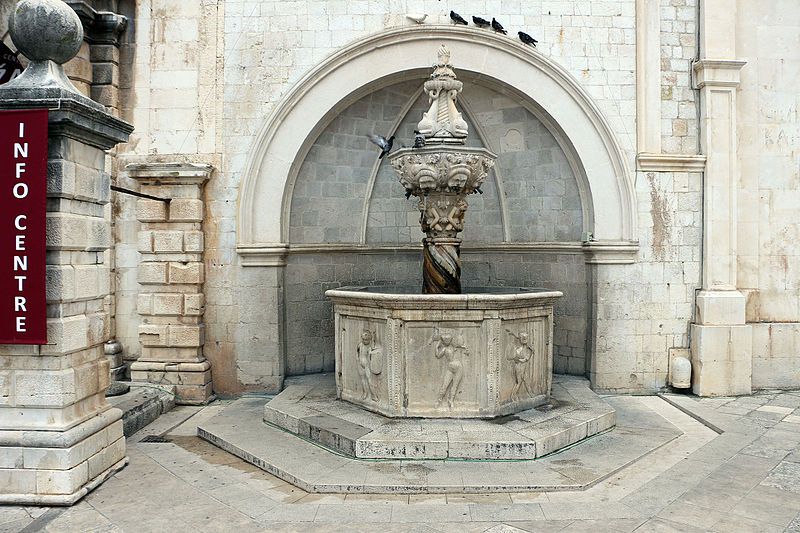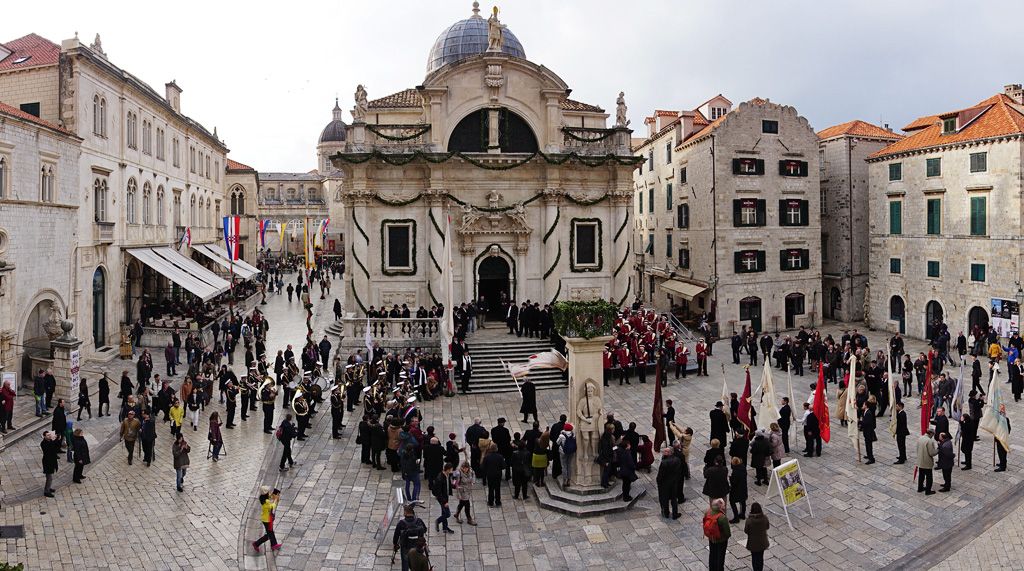VIDEOS: Amazing New Google Project Shows Croatian Culture to the World
September 18, 2020 - Incredible new video series explore Croatian culture, its natural assets, and the country's rich traditions, a collaboration with Google
Steeped in history and tradition, Croatian culture is incredibly diverse. Recognised as being of high value to the country's appeal and its understanding of itself, many items from this rich heritage appear on the protected UNESCO list.
The Croatian National Tourist Board has teamed up with Google Arts & Culture and partners The Museum of Arts and the Museum of the Sinjska alka to produce an incredible series of videos that explore this cultural heritage.
From arts & crafts to music and dance, natural assets and architecture, the new videos show off the rich menu of traditions assets that make Croatia such an incredible country. With so many items included on the protected UNESCO list, there's always something more you can learn about Croatia, no matter how many times you visit.
Lace-making, costumes of folklore, ancient instruments, time-honoured recipes, beloved festivities and distinct, regional styles of music are just some of the facets of Croatian culture explored in the videos. Now, people from all over the world can explore Croatian culture and heritage before they even arrive. The menu of videos and accompanying media is presented in both English and Croatian.
Some of the videos in the series are not new, but they have been selected by the Croatian National Tourist Board for inclusion as they are the best at showcasing their particular aspect of Croatian culture. Alongside the video presentations, there are a wealth of photographs and informative texts. You can view the whole new collaboration with Google Arts & Culture here
For the latest travel info, bookmark our main travel info article, which is updated daily.
Read the Croatian Travel Update in your language - now available in 24 languages
Croatian Intangible Heritage: Google and Croatian Tourist Board Cooperate
As Novac/Bernard Ivezic writes on the 17th of September, 2020, the tourist champion of the Mediterranean has a new ace up its sleeve to attract tourists, but also to promote its very own culture. As of today, Croatian Intangible Heritage is available on Google on the pages "Croatia: Hearts & Crafts" in both Croatian and English.
Croatia is one of the countries with the largest number of intangible cultural heritage sites in the whole world. Croatian intangible heritage is under the protection of UNESCO, and is now available on the Internet through the cooperation of Google Arts & Culture and the Croatian National Tourist Board (CNTB/HTZ).
The Museum of Arts and Crafts and the Museum of the Sinj Alka participated in the project, thus becoming just some of more than 2,000 cultural institutions from 80 countries participating in the Google Arts & Culture project.
Kristjan Stanicic, the director of the CNTB, says that this is the first large and comprehensive project of the Croatian National Tourist Board and Google which promotes Croatian intangible heritage in an innovative way.
"As part of this project, we've revealed 25 Croatian intangible traditions to the world that will, I'm sure, contribute to further positioning our country as a tourist destination with a rich and diverse offer with emphasis placed on our cultural and historical heritage, which we're all very proud of,'' said Stanicic.
Intangible cultural heritage that refers to traditions or living expressions that are passed from one generation to another are being presented through this joint project in four sections, ie through the knowledge of crafts, folk songs and dances, and then festivities and food.
Amit Sood, director of Google Arts and Culture, says 2020 has been a challenging year for travellers around the world. He is convinced that this project to showcase Croatian intangible heritage through cooperation with Google will bring even more people closer the rich traditions and history of Croatia, which is already known for its natural beauty and picturesque cities.
"Using technology and innovative storytelling techniques, this project in cooperation and under the auspices of the Croatian National Tourist Board is aimed at preserving and promoting selected aspects of Croatian intangible heritage to a global audience. This is also the first global presentation of Croatian intangible heritage on Google Arts & Culture,'' stated Sood.
Some of the examples included in the project are the making of Agave lace, which according to tradition originates from the Canary Islands, and which today in Croatia is made only by nuns from the Benedictine monastery in Hvar Town on the island of the same name. The incredible Sinjska Alka, held every year in August on the anniversary of victory over Turkish invaders in 1715, when 700 Croatian soldiers from Sinj managed to repel the onslaught of 60,000 Turkish soldiers, as well as the traditional Tribunj donkey race, which is held every year on the first day of August.
The project also includes Nijemo kolo from the Dalmatian hinterland, which is unique in that it is performed in a circle or in pairs almost exclusively without any musical accompaniment, klapa singing, traditional polyphonic homophonic singing without the accompaniment of instruments dedicated to love or to the community in which the singers live, the art of preparing strukli, from Zagorje a salty or sweet dish made of dough stuffed with cheese, the most famous specialty of Hrvatsko Zagorje, and the folk singng, becarac, is also described, and much more.
It's also worth mentioning that by using the Google Street View feature, people around the world can virtually navigate through many places, and with just one click they can find out additional information about Croatian treasures or immerse themselves in high-resolution photos. They can visit the glittering coastline and dive into the crystal clear Adriatic sea, explore Korcula, the home of the Moreska sword dance, or travel to Omis, where the Festival of Dalmatian Klapa takes place. They're free to stop by the island of Lastovo, known for its natural beauty, Venetian architecture from the 16th century and a traditional events, and much more.
For the latest travel info, bookmark our main travel info article, which is updated daily.
Read the Croatian Travel Update in your language - now available in 24 languages
Papuk Nature Park has UNESCO Status Extended for Four Years
March 26, 2020 - Papuk Nature Park, the first UNESCO Geopark in the Republic of Croatia, has retained its status as one of the world’s geoparks.
Namely, HRTurizam reports that part of the regular revalidation process, a two-member UNESCO Geoparks Commission visited in July 2019. During their four-day visit to the Papuk Geopark, they were presented the progress made in the past two years, from infrastructure to new projects, and met with stakeholders and representatives of local government.
The UNESCO World Geoparks Council, based on the report of the revalidation, has decided to extend its status in the UNESCO World Geoparks by four years, with recommendations for future work.
“We base the entire future of the Park on the signature of UNESCO. And our biggest project, Geostories, bears its name. Therefore, the whole progress of the Park's tourism offer, carried out for the benefit of the local community, is also due in large part to the status of a UNESCO geopark. We are thrilled and proud that our membership in the World Geoparks Community has been extended for another four years,” said Alen Jurenac, the Papuk Nature Park Director.
Thanks to its lowland plains with large cultivated areas, Papuk Nature Park is one of the main features of Slavonia. The Papuk Nature Park is located in the mountain forest areas of Papuk and was declared a nature park on April 23, 1999. Its exceptional natural value encompasses a great diversity of habitats and species of plants and animals, but also geological diversity represented in numerous geological formations created in different periods of Earth's past.
Of particular value are the numerous fossil finds of organisms that lived 16 million years ago in the "Pannonian Sea".
The Papuk Nature Park, near Vocin, houses the first geological nature monument in the Republic of Croatia, protected in 1948 because of its unique morphological occurrence in Croatia - the columnar secretion of volcanic rocks.
To read more about lifestyle in Croatia, follow TCN's dedicated page.
Mura, Drava, Danube Rivers Submitted to UNESCO as World's First Five Country Biosphere Reserve
October 2, 2019 - Austria, Slovenia, Croatia, Hungary, and Serbia have joined forces to make the Mura, Drava, and Danube rivers the world’s first five-country biosphere reserve.
HRTurizam reports that the joint nomination of Austria, Slovenia, Croatia, Hungary, and Serbia, sent to UNESCO on September 30, is the final step to proclaiming the Mura-Drava-Danube the world’s first five-country biosphere reserve. UNESCO certification is expected in June 2020.
The Mura, Drava, and Danube rivers, which flow through five countries, form a 700 km long green belt and connect over 930,000 hectares of unique area with significant natural and cultural heritage, creating the so-called European Amazon.
“This cross-border nomination is a strong indicator of strengthening regional cooperation and unifying countries with the unique objective of protecting nature. Working on a joint nomination is a great example of interstate cooperation on such an important issue,” said Petra Remeta, Director of WWF Adria's Nature Conservation Program.
The core and impact area of the biosphere reserve extends to 280,000 hectares and includes 13 protected areas and is surrounded by 650,000 hectares of the transition area. Rare flooded forests, sand and gravel shoals, river islands and backwaters form a unique river and cultural landscape. Also, Europe's Amazon is home to Europe's largest population of white-tailed eagles, as well as other endangered species such as small terns, black storks, otters, beavers, and sturgeons. It is also an important area for more than 250,000 migratory birds.
Not only is it home to numerous plant and animal species, but nearly 900,000 people depend on the Mura, Drava, and the Danube. Floodplains protect the settlements from flooding and secure drinking water supply, while exceptional river landscapes increase the potential for sustainable tourism.
"The designation of a biosphere reserve is an important departure from harmful projects such as the construction of new hydropower plants or the extraction of sediment. Sustainable coexistence of humans and nature is the direction we must go if we are to mitigate the inevitable consequences of climate change, which we are already feeling,” said Ivana Korn Varga of WWF Adria.
The Five-Country Biosphere Reserve project is valued at 14 million euros, is co-financed by the European Union, and contributes to the protection of nature and the development of the whole area. Thus, as part of the coop MDD initiative, the cooperation of protected areas in all five countries was established with a view to cross-border management, while the focus of the European Amazon Bike Trail project develops a sustainable cycling tourism model. On the other hand, concrete river revitalization measures are being implemented through different projects to create new habitats and recreational zones along the rivers.
The joint nomination is the result of the work of the Ministries and Public Institutions for Nature Conservation of Austria, Slovenia, Croatia, Hungary and Serbia, the UNESCO Human and Biosphere Commissions, as well as the efforts of WWF, EuroNatur and many other nature protection organizations in all five countries.
To read more about lifestyle in Croatia, follow TCN’s dedicated page.
Split to Host Organization of World Heritage Cities Conference Next Year
Split will host the Regional Conference of the Organization of World Heritage Cities of Central and Eastern Europe in October next year, announced the City of Split on June 6, 2019. Split was chosen as the host at the 15th World Congress of OWHC held in Krakow, where Split mayor Andro Krstulović Opara attended to accept the candidacy.
The City of Split renewed its membership in this organization in 2018 at the initiative of Mayor Krstulović Opara, since the previously active membership, which began in 1993, was interrupted in 2007.
The inevitable issues of this year's world congress include tourism of cities of world heritage and the need to harmonize national legislation with the UNESCO and OWHC guidelines in order to unify the needs of the local population as well as the relations of the population with the business world and investors.
Mayor Andro Krstulović Opara pointed to the importance of strengthening cities in Europe by achieving autonomous decision-making and lowering authority from the state and the European Commission to cities, as an increasing number of Europeans live in cities.
“Particularly sensitive are the cities of cultural heritage that play a special role in this phenomenon of immigration and mobility of the population,” said Krstulović Opara.
As common problems of world heritage cities, the issues that the ancient city centers face regarding the mass of apartments rented through Airbnb and other platforms were highlighted. Difficulties also arise in traffic or inadequate infrastructure that cannot withstand increased numbers.
Split will host the most important historical cities of Central and Eastern Europe as part of the 40th anniversary of the inclusion of Diocletian's Palace and the old city center on UNESCO's World Heritage List. This and related topics will be proposed by the Split presidency to the Conference.
To read more about lifestyle in Croatia, follow TCN’s dedicated page.
UNESCO Heritage of Croatia - Vis Archipelago UNESCO Global Geopark Croatia
May the 27th, 2019 - taking a closer look at beautiful Vis and its UNESCO heritage.
On the 17th of April, 2019, the UNESCO Executive Board approved the designation of eight new Global Geoparks which demonstrate the diversity of the planet’s geology. Croatia's Vis archipelago got this recognition. This article will take a closer look into some natural heritage from the stunning Vis archipelago.
The Vis archipelago covers the island Vis and the surrounding islands and islets Biševo, Sveti Andrija, Brusnik, Jabuka, and Palagruža. The archipelago is the area that has the oldest and youngest geological formations.
Some parts of the archipelago are made from volcanic rocks while most of the Adriatic islands are made from sedimentary rocks. Sailors and fishermen were always aware of this specific geological area. They knew when they would sail close to volcanic islets of Jabuka and Brusnik as their compass would divert from the north, potentially putting them in danger. Vis island has parts where the foundation is volcanic rock, which created several water springs. These springs created fertile conditions, so it's no wonder the ancient Greeks chose Vis about 2,400 years ago as the place to found their first colony on the Adriatic.
The Vis archipelago is located off the coast of Croatia, and there some of the oldest rocks in the Adriatic sea, formed 220 million years ago, can be found. Sedimentary rocks are the base for most of the Vis archipelago. The origin of these rocks comes from the lithification process of sand, mud, and sea organisms.
The north-eastern region of the archipelago includes large sand deposits formed in the Ice Age which created unique forms and caves. Before the sudden rise of the sea level 12000 years ago, these islands were much larger and extended more than twenty miles. In this extended area called Mala Palagruža, an archaeologist discovered flint quarries that served for the production of early tolls believed to have been made by the islands' first inhabitants.
The Vis archipelago is formed around Vis island and includes a number of nearby uninhabited islets: Ravnik, Budihovac, Veli Paržanj, Mali Paržanj, Greben, Host, Veli Barjak and Mali Barjak and the open sea islands among which the most remote are the island of Palagruža, inhabited only by lighthouse keepers, and the magmatic island of Jabuka, some 30 nautical miles west of Vis. The surface of this maritime area covers almost 6000km2 and also includes Sveti Andrija, Brusnik and the island of Biševo which, is the only inhabited island.
In this area, the largest number of ''monuments of nature'' in Europe can be found – Blue Cave, Monk Seal Cave, the volcanic islets of Jabuka and Brusnik, Stiniva Cove, and the Green Cave on the islet of Ravnik.
The Vis archipelago is a small area, but it boasts a wide range of significant landscapes and protected monuments of nature, some of which attract a lot of visitors.
The Blue Cave
In 1884, the Viennese painter baron Ugen Ransonnet introduced the Blue Cave on the island of Biševo to the world. His discovery marked the beginning of tourism in Dalmatia, and the Blue Cave has since become a must-see tourist spot in the Adriatic. The Blue Cave has been a protected geomorphological monument of nature since 1951. Visitors can go to the cave from Biševo Mezoporat. There are people all over the world visiting this unique cave every summer.
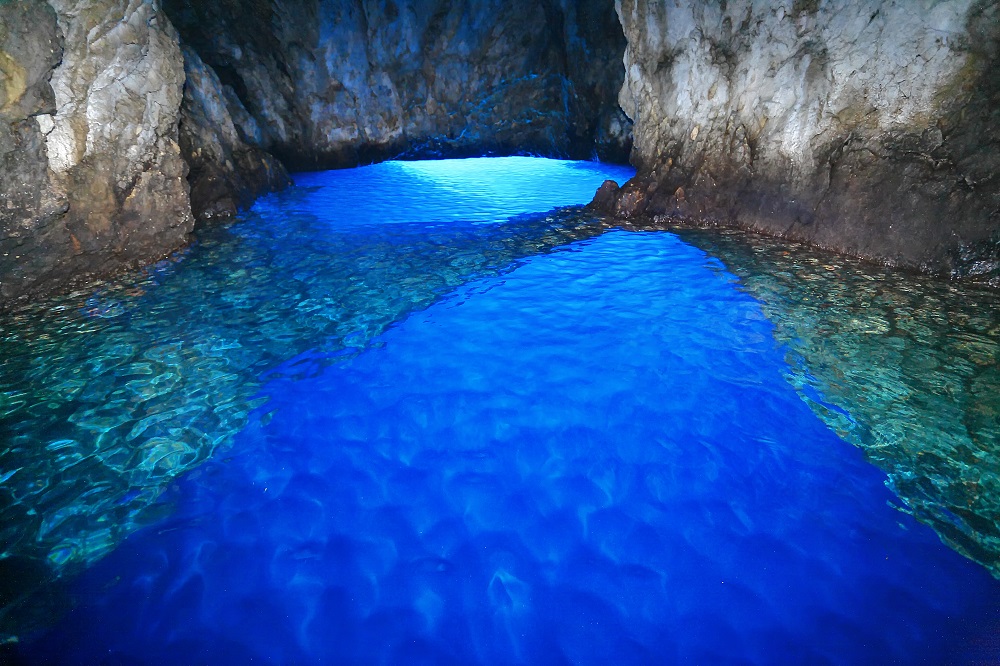
The Monk Seal Cave
The Monk Seal Cave is the longest sea cave in the Adriatic – 160 metres. It is a protected geomorphological monument of nature from 1967. The name comes from the Mediterranean monk seal which once lived here.
Jabuka islet
Rising above the sea like a black pyramid, the island is 30 nautical miles from Komiža, is 97 metres high, and is a protected geomorphological monument of nature from 1958. The island is composed of deep crust magmatic rocks, the magnetite of which interferes with seafarers’ compasses making navigation in conditions of poor visibility extremely difficult when near it. The underwater area is rich in fish and crabs, which is why fishermen from Komiža go to Jabuka in winter and risk their lives going to the island, which has no docks.
Jabuka doesn’t have a natural bay and doesn’t provide shelter from the wind. Anchoring a boat is a difficult task due to the deep sea around the island, and its smooth rocks polished by the sea make it impossible to tie the ship around them. There are as many as twenty toponyms here, and these are the only human traces on this further insular frontier of the eastern Adriatic. The island is made from volcanic diabase rocks and is home to the endemic black karst lizard and two endemic plants.
The Green Cave on the islet of Ravnik
This cave is a protected geomorphological monument of nature from 1967, and the islet itself is a significant landscape. The Green Cave has two large openings to it and it doesn’t give the same type of blue light effect as the Blue Cave, but it's entirely unique because it has a small opening in the middle from where sunlight breaks into the cave and lights up the sea bottom like a spotlight in the darkness. The blackness of this cave enhances the intensity of this miraculous spotlight.
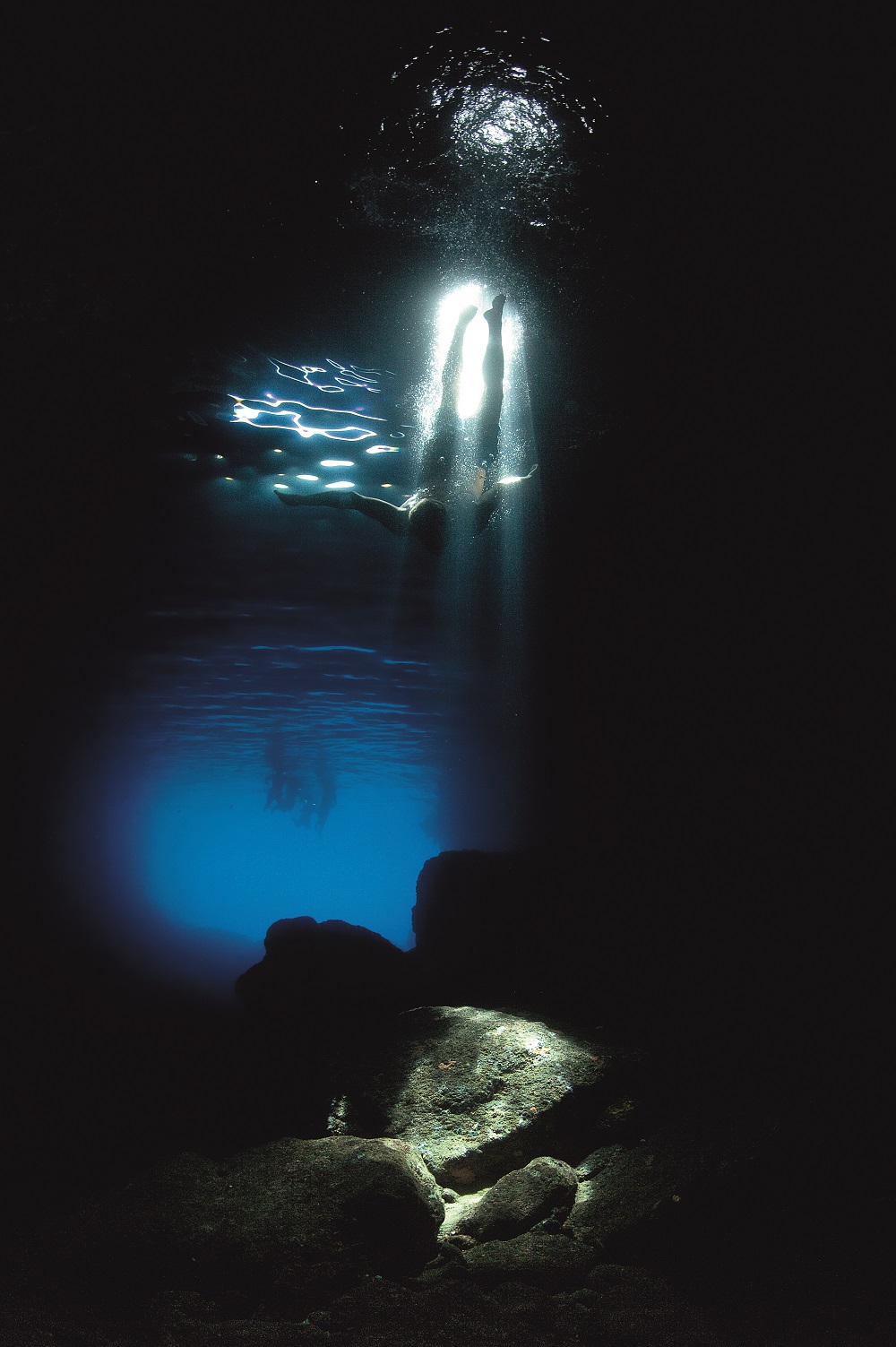
Stiniva bay
Stiniva bay has been classed as a significant landscape since 1967. This narrow and long bay ends with a stone ''gate'' leading into a small cove with a pebble beach surrounded by layered rock walls. Once, Stiniva was a karst cave and it probably collapsed several thousand years ago. In 2016, Stiniva was named the most beautiful beach in Europe.
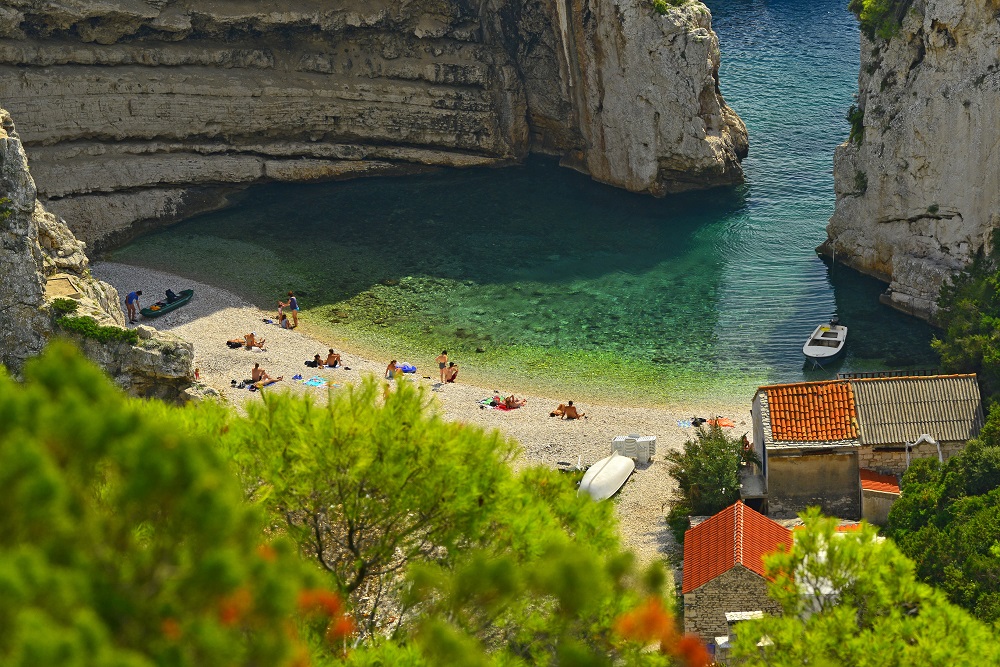
Ravnik islet
Ravnik islet is a significant landscape of nature and is located off the eastern coast of Vis, boasting its green cave.
Brusnik
Brusnik is the protected geomorphological monument of nature and is located thirteen nautical miles from Komiža. Brusnik and Jabuka are the only islands in the Adriatic formed from igneous rocks. It is 23 meters high, and both Brusnik and Jabuka are made of subvolcanic diabase formed by the crystallisation of magma on its way from the deep magmatic core up to the surface. Brusnik island is far more complex than Jabuka, however. Brusnik has paleo beach pebble conglomerates which can be found on the top of the island.
In the middle of the island, there is a ravine with a depression filled with seawater used by fishermen from Komiža, in which they made larger pools to keep their captured lobsters. There are also the remains of fishermens' cottages built from large rocks. These small homes were in use for salting fish in barrels and to keep the fishermen safe from the wind and sun. Brusnik has been a protected area since 1951 and it boasts a special structure – as most of the islands have a limestone base.
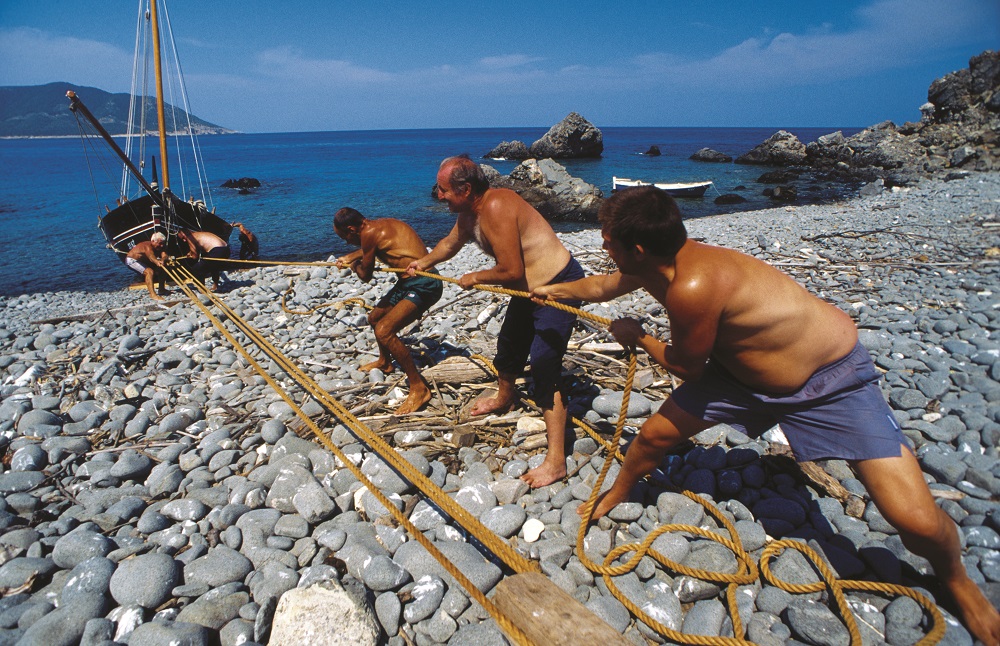
There are several geo-trails in Vis archipelago, here are a few handy links to them:
Geo trail Komiža: https://geopark-vis.com/en/geology/geo-trails
Geo trail Biševo: https://geopark-vis.com/en/geo-trail-bisevo
Geo trail Vis Rukavac: https://geopark-vis.com/en/geostaza-vis-rukavac
A list of geological locations can be found here: https://geopark-vis.com/en/geostaza-vis-rukavac
With this geological area, there are naturally a lot of local traditions and pieces of heritage worth knowing about. Some of the most valuable are Gajeta Falkuša, Suhozid – dry stone walling (another piece of Croatia's intangible UNESCO heritage), The local Vis dialect, Gajeta Falkuša, which is a traditional historical fishing boat. Fishing has been the traditional main occupation of local men from Komiža for centuries. Komiža fishermen are well known as the first to catch fish on the open sea and to face a lot of dangers due to poor weather conditions and pirate attacks.
Local inhabitants lived off the sea and were facing different threats. To fight the open sea and the risks that faced them, fishermen needed to have small and quick boats which could carry a lot in them too. To survive these rough conditions, they made falkuša – a unique traditional fishing boat from Komiža. It is made for fishing, sailing and cargo carrying. The name comes from the word falka, or the sideboards of the ship which enabled the boat to be used for different purposes.
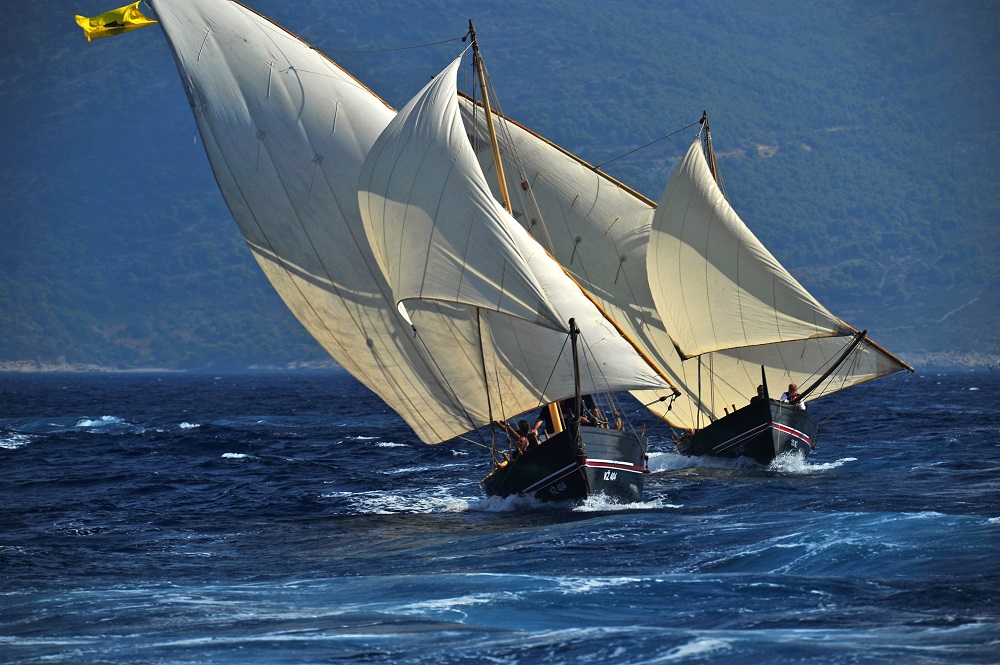
The people of Komiža are proud of Gajeta Falkuša, but it almost disappeared as the storm on Biševo island wrecked the last Gajeta Falkuša named Cicibela.
This terrible damage was repaired by professor Joško Božanić and Velmir Salamon who carried out research on Falkuša for eleven years and all of the aspects essential for this boat, including halieutic, cultural and anthropological interpretation, which included language, lexicon, literature, fishing history, toponymy and anthroponymy, shipbuilding, the art of sailing, traditional weather forecasting, the art of fishing, and even gastronomy.
In 1997 this traditional boat was saved in the form of ''Comeza-Lisboa'', the first falkuša built after many years, as part of the research project of the Cultural Association Ars Halieutica from Komiža. ''Comeza- Lisboa'' was presented at the world expo in Lisbon, Portugal. This launching was a historical moment for Komiža, where old fishing traditions, knowledge and skills were revitalised and presented to locals. Today we have four Gajeta Falkuša boats: Comeza-Lisboa, Mikula, Palagruža and Molo.
Molo is a smaller variant of Falkuša on which children used to learn fishing skills.
Dry stone walling
This piece of UNESCO heritage is an art of its own and is an old tradition which continues to be nurtured on numerous islands and in coastal Croatia, but it's especially interesting on the island of Vis. This type of rural architecture is part of the Vis landscape and has a different form than the rest. The story of dry stone walling is a story about survival, where peasants used their skills in rocky landscapes and securing smaller fertile areas to grow their vineyards and deal with other types of agriculture.
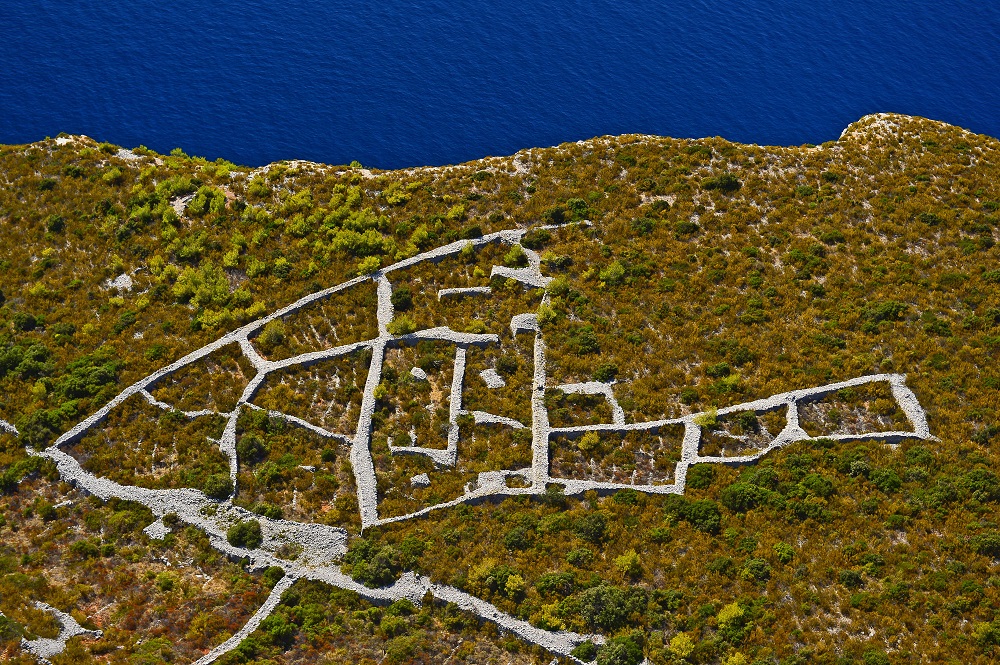
On Vis, the village of Dragodid near Komiža is very well known for its dry stone walling heritage and remains a place for dry stone workshops to this very day.
.jpg)
The Cokavian dialect of Vis
This is another piece of intangible heritage of Croatia and the oldest Slavic dialect in the Eastern Adriatic. It is unique in the fact that it preserves the lexicon from the lingua franca idiom, which is characteristic for the maritime and fishing world. Here is an example of the traditional cokavian dialect of Vis:
U śpȍmen nȍni Juvãni
Śvãku jȕtro
cîn bi źorâ źarudȉla
cîn bi źvȍna źaźvonȉla
ol śnâ bi śe vãrgla
pôk bi źavōpȉla
Ôva Marȉja
śvãki dôn źa pūlnê
kal bi śûnca grûźd śaźrîl
a iź kanpanȅla śe źvûn jōvîl
ol śtolâ bi śe dvȉgla
pôk bi źlãmen
krīźâ ucinȉla
Ôva Marȉja
ondâ jȍpet u śutûn
źajȅcol bi źvûn
a nâ bi pośôl dofinȉla
pôk bi śȅla u kantûn
krȕnicu molȉla
glōvûn obandovãla
kriźȉć buśivãla
i źãrno po źãrno
prȉko pãrśta voltovãla
Ôva Marȉja
i ȍto tãko je nȍna
iś Gūśpûn cavarjãla
trî pūtâ nã don
na plãc źvȍna
molȉtve olpivãla
i da śe nî śvȁ
u molȉtvu pritumbãla
do glũhe źemjê
da nî prĩgla śȉju
śigûr śon
jȍś bi vãvik
naźdrovjãla
Ôvu Marȉju
- Vinko Kalinić (From the collection of songs)
SOURCE(S) (text and photos): UNESCO, Geopark Vis
Find out more about Croatia's incredible UNESCO heritage by following our dedicated lifestyle page.
Sustainable Tourism in Dubrovnik - What Steps Can You Take?
As you all know, the beautiful city of Dubrovnik is located along the sparkling waters of the Adriatic, and attracts people from all over the world for its bright blue sea, medieval walls and Game of Throne’s filming spots.
Tourism in Dubrovnik has sky rocketed in the past few years, and a lot of it has to do with the Game of Thrones’ filming locations, which brings 60,000 tourists a year just for that particular reason.
It was reported that in a single day in August of 2016, over 10,000 tickets were bought to walk Dubrovnik’s famous city walls. This heavy influx of tourism has caused excessive pollution, the destruction of animal habitats, and it overloads the infrastructure as well as threatens the culture and heritage of the city. The limestone of Stradun has been gradually smoothed down from thousands of people walking along it with each tourist season, so much so, that the city has had to manually create texture on the limestone with hammers to create some kind of slip resistance.
The prices of homes in Dubrovnik’s Old Town have increased because of the amount of houses being turned into Airbnb’s to accommodate tourists. This destroys a sense of community and inflates the price of property. It has been reported that today only 1,157 people call Dubrovnik's Old City home, compared to 5,000 in 1991. Many argue that Dubrovnik is on its way to become the next “Disneyland”, which has already happened in places like Venice, just across the Adriatic.
Along with the threat of the city turning into a place that does nothing but cater to its many foreign visitors, over construction along the coast is threatening the biodiversity of the land, as well as pollution from the thousands of visitors who walk through the streets of Dubrovnik each day. Dubrovnik is a beautiful city that has a rich history, and it's a no brainer why people want to go within the city’s walls. There needs to be a solution that allows visitors to travel to this uniquely alluring city on the Adriatic, but in a way in which such trends won't destroy the land and the culture.
Any tourist who is interested in planning their next trip to Dubrovnik should see if they're meeting a standard checklist that will keep over tourism from saturating the city. This checklist should make foreign travellers consider the following,
Is the place you are staying at owned by locals?
Are you supporting local businesses and contributing to the economy versus buying items at manufactured souvenir shops?
Are you participating in any excursions that do not respect the environment?
Are you respecting the locals’ culture?
Do you clean up after yourself when visiting the hiking trails or beaches?
By promoting and implementing the use of a kind of checklist for tourists to use to keep these questions in mind when visiting Dubrovnik, visitors and locals are ensuring that there is a way to coexist in a positive manner, where the economy can prosper, and continue to make Dubrovnik a thriving destination for people from all over the world. Making visitors aware of sustainable tourism through promotional advertisements or a simple brochure when they enter Dubrovnik’s walls has the potential to influence their actions.
By supporting local businesses, treating the land as if it were your own, and respecting Dubrovnik's way of life, it is ensuring that the long-term development of tourism in Dubrovnik is sustainable and promotes the harmony of the local economy, the environment and the cultural/social aspects of the city.
SOURCE(S): Overtourism in Dubrovnik from Responsible Travel. (n.d.). Retrieved here.
Make sure to follow our dedicated lifestyle page for much more. If it's just Dubrovnik you're interested in, give Total Dubrovnik a follow or find out all you need to know about the Pearl of the Adriatic with Dubrovnik in a Page.
UNESCO World Heritage – Episcopal Complex of the Euphrasian Basilica in the Historic Centre of Poreč
This article will take a look at the Euphrasian Basilica in beautiful Poreč, which is listed on the prestigious UNESCO World Heritage List.
This basilica is extraordinary because it is a truly unique example of early Christian and Byzantine architecture and boasts some spectacular mosaics from that time. This is a complete surviving complex of this type, and this episcopal complex consists of the basilica, the atrium, the baptistery and the episcopal palace, which is an impressive example of religious architecture.
Poreč has a very long history and was initially the Roman town of Paretinum. The Euphrasian basilica is from the 6th century, and it remains one of the landmarks that makes Poreč recognisable to the world. It’s been on the UNESCO World Heritage List since back in 1997 based on its level of preservation and sheer beauty.
.jpg)
The history of Christianity in Poreč dates back to the 1st century after Christ (AD). At the end of the 2nd century, there was a Christian community under the bishop Mauro – they gathered secretly in his house which actually became the first church in the town. There lay a decorative fish mosaic which was an early Christian symbol.
.jpg)
The first bishop and clergy in Poreč all suffered martyrdom in the middle of the 3rd century, while in the year 313, the Christians were granted the freedom to worship in the Roman Empire. The former secret gathering place then became the very first public church.
At the same location, the first basilica was built during the second half of the 4th century, and that remains that of bishop Mauro and the other martyrs who moved to the early Christian cemetery. A larger basilica was constructed in the first half of the 5th century next to the existing basilica, and it was known as the Pre-Euphrasian basilica.
The floor mosaic of the temple area of the Pre-Euphrasian basilica was placed in the former sacristy. When Euphrasius first came to Poreč, he almost destroyed the old basilica in the mid-6th century, and built a magnificent three-nave basilica which still stands in Poreč today. At that time (543-554), the entire complex was made – the atrium, the bishops palace and the old baptistery.
The influence of Constantinople, the very centre of early Byzantine culture, is visible in the art and mosaics used in the construction and the decoration of the basilica. The floor of the basilica was covered with mosaics, and there were two layers of floor mosaics – the lower level belongs to the basilica from the fifth century, while the upper level is from the Euphrasian basilica of the sixth century.
.jpg)
The mosaics which decorated the interior are a valuable piece of heritage from the Byzantine era's art, and thanks to the floor mosaic and its preserved inscriptions, we can witness all the periods of its building and restoration even in the modern day. The basilica was built on an already existing Roman heritage site, meaning that various Roman artefacts can be found there, too.
The first church had three parallel rooms, and the central one was used as a basilica and even then, it enjoyed the status of a cathedral. In the 5th century, there were two basilicas in the south which were placed in front of the current Euphrasian basilica, while in the north, the walls and columns were kept standing. There was also a baptistery which remained in use, followed by another which came later on.
To understand why the Euphrasisus wanted to build such a spectacular basilica, it is essential to understand the fact that in the 6th century, Poreč was a small town in the then dying Roman Empire, and the emperor Justinian wanted to restore the Roman Empire's old glory. This is the time in which bishop Euphrasius started to build on the location of the ancient basilica and make this one of the biggest episcopal complexes of that time.
Shiny ''new'' Byzantine art created a unique piece of heritage on the Roman foundation. When Euphrasius came to Poreč, he found a town boasting a very long history, and he became the head of the well established Christian community which already had a few martyrs like St Mauro and St Eleturis under its belt by then.
Euphrasius began construction on the foundation of the previous church where he found early Christian mosaics decorated with images of fish with the mosaic donators' names inscribed on them, which helped in tracing the early Christian community in Poreč. There is one stone panel with an instruction written on it, from which we've been able to learn about the transfer of the body of St Mauro from a cemetery outside the town, to the place where the very first church originally once stood.
.jpg)
The new basilica, which was large in size, grew along with existing church objects. The construction of the basilica, the organisation of interior spaces, elements and ornaments, images on mosaics were all representing essential steps in the development of western art, influenced heavily by art from the east.
The entrance was formed one street before, and opposite the entrance, lies the baptistery – eight angles are from Pre-Euphrasian times, and the base is antiquity-era architecture. The structure of the wall and the wooden constructions of the roof are the work of local builders.
.jpg)
On the north-east angle of the basilica, there is a memorial chapel in which the layout is a bit different. The chapel, which was home to the relics of martyrs, has an oval atrium in front. The whole building underwent much needed restoration work in the 19th century.
The previous buildings on the site were construction material for the atrium, baptistery, and some parts of the basilica's walls. The organisational structure of the complex is confirmation of the whole concept which bishop Euphrasius initially had in mind, and this highlights just revolutionary his ideas really were for that time period. The rich decorations of the interior are additional evidence of the advanced ideas Euphrasius had, and represented Byzantine influence.
In front of the entrance to the basilica lies an atrium formed in the shape of a square, while the middle part of the atrium is an open space surrounded by arches - three arches on each side to be more specific. The eastern side of the atrium leads to the basilica and the western side to the baptistery. The central arch of these sides is elevated.
.jpg)
The arched-on columns and capitals were brought from Constantinople, just like with the one from the basilica. In the 16th and 17th centuries, during the great plague, the atrium and area around the church were used as a cemetery, with the atrium being rebuilt in the second half of the 19th century. Fragments of stone monuments from different periods of the Episcopal complex are displayed on its walls.
The baptistery is located in the western part of the Episcopal complex with the entrance facing the basilica. It was built in the 5th century and bishop Euphrasius had it restored and decorated in the 6th century. It was largely reconstructed in 1881 and then once again after the turn of the century, in 1935. The baptistery is an octagonal building with a hexagonal baptismal pool in the middle. It was surrounded with a sixteen-sided ambulatory, a sloping roof and three entrances.
The bell tower next to the Euphrasian basilica was built on the western side of the baptistery in 1522. Its 35 metres in height and provides a stunning view of the area. The bishops place is an integral part of the Episcopal complex, it is located in the northwestern part of the complex. On the first floor, there is a large ceremonial hall with a semi-circular apse on the northern side, it once used to be the audience hall, where the bishop received guests. Rights next to it on the left and the right sides there were once small chapels.
.jpg)
On the porch in front of the bishop’s palace lie some stone exhibits, capitals and various fragments of inscriptions in stone from previous basilicas in the area. The most important part of this lapidary is placed on the ground floor of the bishop’s palace. On the premises of the bishop’s palace, visitors can see different objects used by the church which span entire centuries.
The later built ciborium is part of the basilica from the 13th century, it presents as a masterpiece created seven centuries after Euphrasius' initial work. In 1277, a large marble ciborium was made, and its canopy was set on four columns which were taken from the original ciborium. The new canopy was covered with mosaics and displayed an image of the Annunciation. From this time, visitors are able to see visible differences in the composition and design when it comes to iconography and images of the Virgin Mary and the angels.
In the 13th century, the process of cultivating various pieces of cultural heritage one after the other took place once again – older pieces of heritage was blended into newer pieces. Early Byzantine capitals and columns hold the construction of the new gothic canopy covered with mosaics which clearly mark the end of one era and the beginning of a new one, a process which slowly removed the characteristics of Byzantine art and shows the turn towards the Venetian influence.
The Venetian influence can be seen at the basilica by turning to western cultural influence - this is noticeable in all the future interventions and additional work on the basilica and in Poreč.
.jpg)
The naves of the basilica share two rows of nine arcades and are connected to their pillars on the wall at their western and eastern ends. The arcade consists of gray marble poles that are based on well-shaped bases, and in the upper part, they end with the capitals over which they are imposed on round medals, in which there are embellished Euphrasius monograms.
The basilica and the whole complex have various capitals, rich perforations, and ornaments. There are several marble panels decorated with reliefs with different symbols like crosses, monograms, birds, deer, stylised horns...
.jpg)
In the arcades on the north side, the stucco was also painted in its original form. This visual glitter should also add the incrustations in the lower part of the apse. The pieces of multi-coloured marble and nacre are placed on the walls and make for creative ornaments. In the apse, there are also marble seats for the priests who close the marble slabs with dolphin reliefs on the side, while the centre of the semicircle is the place for the bishop's chair.
The walls of the Euphrasian basilica are one of the most valuable pieces of heritage as they boast various mosaics. Additionally, this is the place where iconographic innovation was applied for the very first time in the West. In the central part of the apse one can see the image of the Virgin Mary, which usually was the place for the image of Christ. The image shows the Virgin Mary sitting on the throne holding baby Jesus, who is wearing festive Roman clothes. On each side sit angels who are leading the groups coming to greet her. On the left side, three unnamed martyrs with wreaths in their hands and halos above their heads approach Mary, they appear like angels dressed in festive Roman clothes.
.jpg)
On the other side, behind the angel, stands St Mauro, depicted in the same way as the previous three martyrs, but with a printed name and a halo. This bishop and the saint of Poreč is leading a group of the contemporary people: the bishop Euphrasius holding the model of his basilica, the archdeacon Claudio (Euphrasius' brother) and the archdeacons son named Euphrasius, as well. Euphrasius had written his desire to renew the old basilica there.
The angels and the holy martyrs of the parade surround the Virgin Mary on the throne. Opposite to them, the living characters without halos are depicted in an individualised manner, as if they were portraits.
.jpg)
Other mosaics depict a strong Christian iconography too. The image of the Virgin Mary is the central point of Euphrasius basilica. She is of course holding baby Jesus, and this image presents two of the unarguably central figures in Christianity. The image of Annunciation in Christian iconography is the connection between Jesus and Mary. The image of Annunciation is based on Luke’s gospel, and such images can be traced as far back as the 4th century in catacombs, while this iconography became more developed in the 5th century, as is visible in the Poreč basilica.
In the 6th century, in the time of Justinian and Byzantine-influenced art, the Virgin Mary wore the veil which symbolised her virginity. The Virgin Mary is pictured sitting on the throne whose columns blend with the basilica's columns, which signifies the connection of the Virgin Mary to the church.
.jpg)
Mary holds a rove while an angel greets her. The angel is turned in a manner where half of its profile can be seen, which was specific for the art of the time, shown as if in movement, wearing bright clothes. Opposite to the image of the Annunciation sits the image of the visit of the Virgin Mary to her cousin Elizabeth. In the middle part of the apse between these two images from the Virgin Mary's life, there is an image of Saint Zachary, an angel, and John the Baptist. In the lower part of the triumphal arch, there are thirteen round medallions.
In the middle section, there is the image of Christ shown as Agnus Dei, while on each side there are six saints pictured, along with their respective names. On the top part of the apse, there is an image of the apostles with Christ in the middle – Christ is presented as a young ruler who rules over the world. The Apostles are surrounding Christ in this image, and have their names written around their halos. In the higher parts of the side apse, there are fragments of mosaics boasting almost identical images – the large figure of Christ comes down from the clouds and is seen placing bay leaves on the heads of two martyrs.
Mosaics of the sort weren’t just placed in the interior of the basilica, but were placed on the outside too. Unfortunately, they weren’t preserved and were covered over when restoration work took place periodically. They originally showcased an image of Christ sitting on the globe, along with his Apostles.
With this extremely rich array of well preserved heritage, the Euphrasian Basilica is somewhere you must visit! Until you manage to pay it a visit, you can check out a virtual tour by clicking here (make sure you have Flash enabled!).
.jpg)
SOURCE(S) (text and photos): Tourist Board Poreč, Istra Culture, UNESCO
GeoStories of the UNESCO Geopark Papuk Project Started
Nature Park Papuk is the first (and only) Croatian UNESCO Global Geopark, selected to the prestigious list in 2015, and various activities are taking place, with the aim of promotion and conservation of the UNESCO Geopark Papuk. UNESCO says on their website that "Global Geoparks are single, unified geographical areas where sites and landscapes of international geological significance are managed with a holistic concept of protection, education and sustainable development." Currently, there are 140 UNESCO Global Geoparks in 38 countries.
One significant activity in the conservation and education of the Papuk Geopark is the GeoStories of the UNESCO Geopark Papuk project, which was awarded as a part of the Operational Programme Competitiveness and Cohesion 2014 - 2020. The large project, worth over 90 million kuna (over 65 million to be funded by the EU) includes creation of the infrastructure for the visitors (Geo-info Centre Voćin, House of the Pannonian Sea, Adrenaline Park Duboka, road reconstruction and improvements on several belvederes), and creation of numerous types of educational and promotional materials and activities. The goal of the project is to improve the tourist infrastructure of the UNESCO Geopark Papuk, through the introduction of the innovative ways to present the historical, cultural, geological and biological wealth of the park, which should result in the increase of the number of visitors to the Park and to this part of continental Croatia.
Yesterday, one major step in the project was taken: works have started on the building of the Geo-info Centre Voćin. The Centre itself is worth 38 million kunas and will include a multidimensional movie theatre, where the visitors will be able to travel back in time. And they will no be making a small leap backwards, no, no, they will be able to travel 23 million years in time (!), but also to see what lies beneath Papuk, what's the experience in the caves and pits in the mountain, but also enter the atmospheric niche of the Miocene land and meet the rhinos that lived on Papuk back in the day.
Suzana Lepan Štefaničić writes for the lokalni.vecernji.hr about the opening ceremony, where Alen Jurenac, the manager of the Papuk Nature Park explained that the opening of the Geo-info Centre in Voćin is expected in the spring of 2020, and it be devoted to biological, geological and cultural heritage, through innovative interaction with the visitors. One of the things he mentioned is that the visitors will get the chance to sense an earthquake and meet the Miocene sharks that swam around Papuk!
In 2018, the Park has had a record number of visitors, but even more people are expected to visit as the road to Jankovac has been reconstructed, so access is much easier these days.
UNESCO and Croatia: World Heritage Site – Dubrovnik Old City
Let's take a look into one of the best-known heritage sites in Croatia and the city that attracts millions of visitors each year. This in-depth article about Dubrovnik comes at about the same time as the 40th anniversary of the inscription of Dubrovnik's old city on UNESCO's World Heritage list, and the 10th anniversary of inscribing Festivity of St. Blaise onto UNESCO's List of the Intangible Cultural Heritage of Humanity.
Conveniently enough, we're at the beginning of a very special month for Dubrovnik, for an event which has been happening each year on February the 3rd.
Well known as the ''Pearl of the Adriatic'' or more recently as the popular Game of Thrones filming location (Kings Landing), Dubrovnik has been one of the historically most important Mediterranean ports since the thirteenth century. Dubrovnik has numerous preserved Gothic, Renaissance and Baroque churches, monasteries, palaces, and fountains. It did get damaged during the earthquake in 1667, and more recently during the Homeland War, but it still kept its beauty.
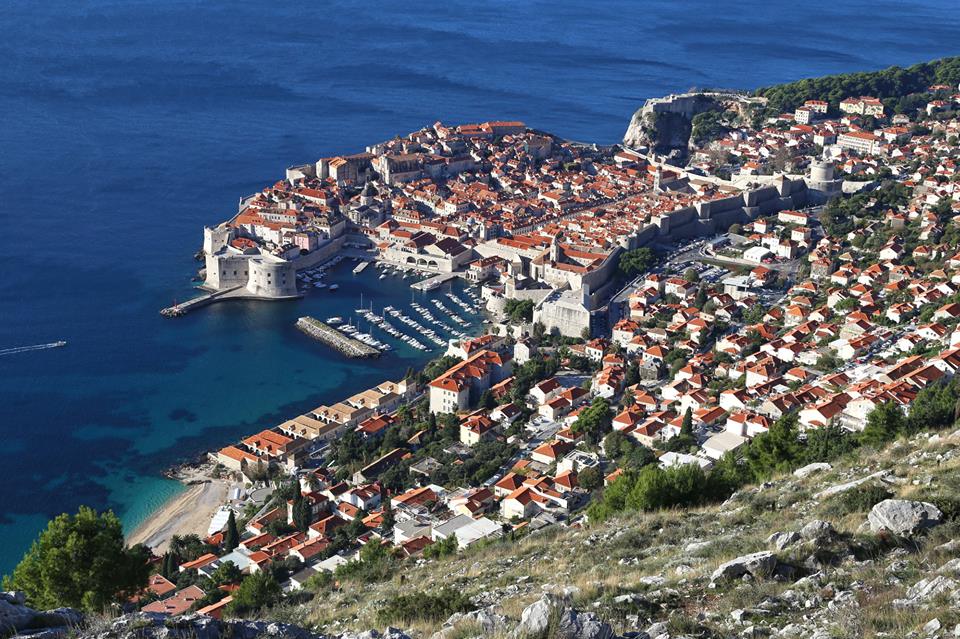
TZ Dubrovnik
To understand just why Dubrovnik has so much heritage and how it has been so well preserved, let’s take a look into this remarkable city's very long history.
The Dubrovnik Republic, which represents the golden period of Dubrovnik's history, perfectly regulated the city and life within it through its statute and other historic documents. This well-preserved city has been able to afford to lie on its Laurels owing to this, as well as its good geographic location and economy which was for centuries based on maritime and merchant activities.
The latest archaeological research discovered that there was a settlement dating back to the sixth century at this location, and this expanded with the arrival of Croats in the seventh century.
Travel and traffic between east and west during and after the Crusades resulted in the development of maritime and merchant centres in the Mediterranean and Adriatic in the twelfth and the thirteenth centuries. Another important event in the history of Dubrovnik was the Zadar Treaty, which in 1358 liberated Dubrovnik from Venetian rule while other Dalmatian towns fell under Venetian rule in 1420 and remained under their control up until the end of 18th century.
This is the reason why Dubrovnik was able to develop much more quickly than the other Dalmatian towns.
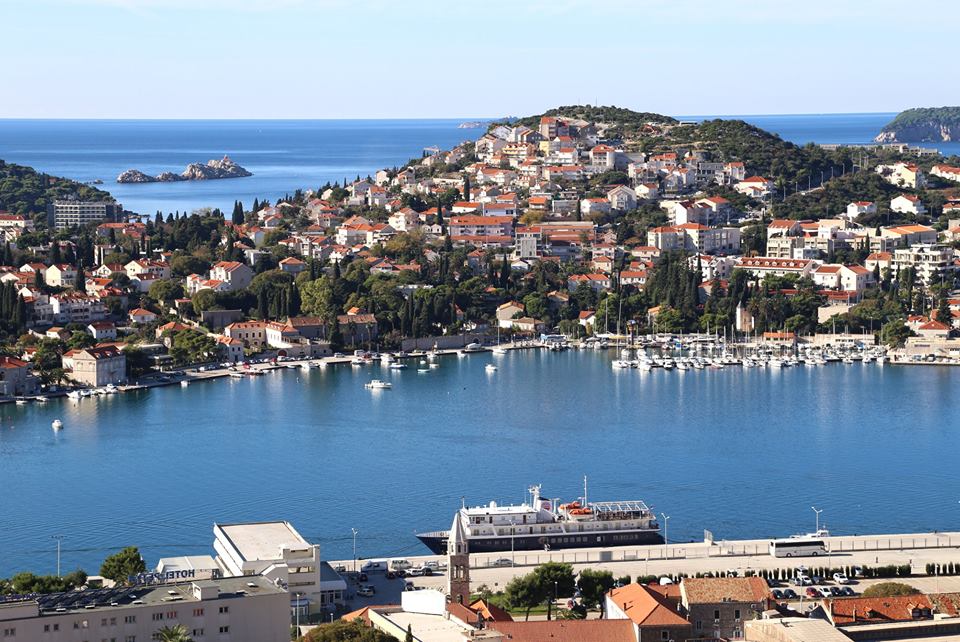
TZ Dubrovnik
In the fourteenth and fifteenth centuries, Dubrovnik was one of the most significant maritime and mercantile centres of Adriatic together with Venice and Ancona. Dubrovnik expanded its territory by using contracts and purchasing the land around the town including the islands, such as Mljet, Lastovo, the Elaphites, and of course Lokrum. The independence of the Dubrovnik Republic was completed by the fifteenth century when they had the independent election of the rector and council, and set their own currency, their own state flag with the image of St. Blaise, independent legislature and the right to establish consulates abroad.
The state authority was based on the great council which had members of aristocratic families in it. They appointed the members of the Senate and the small council which was the executive body of the great council. The rector was appointed on a monthly basis as a nominal symbol of authority.
In the fifteenth century, Dubrovnik had a well-organised transit trade route with the Balkan inland. In 1525, due to the Ottoman expansions in the area, the Dubrovnik Republic decided to pay tributes to the Ottomans and in return, they had the right to free trade throughout the growing Ottoman empire. The Dubrovnik Republic had no army on its own but managed to preserve its independence by being neutral in international conflicts and using the tutelage of powerful countries. The only rival of the Dubrovnik Republic was the envious Venetian republic.
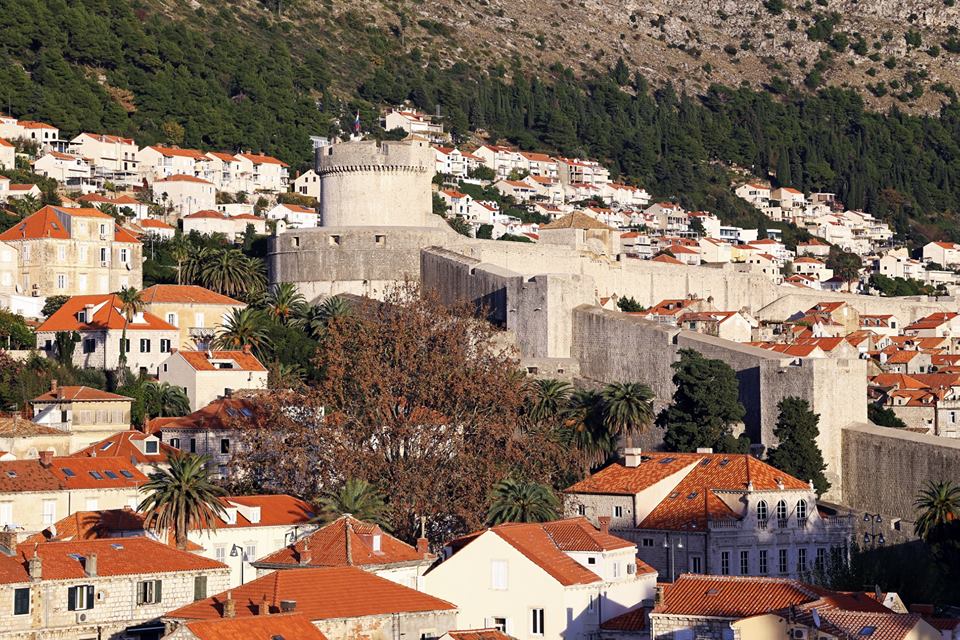
TZ Dubrovnik
The Dubrovnik Republic's golden age started in the sixteenth century – back then, Dubrovnik's merchant navy matched those across the rest of the globe with its quality fleet of 180 to 200 ships. These ships were used for long and dangerous journeys through the Mediterranean and the Black sea, as well as ocean journeys to northern ports in England and Germany, even going as far as India and the Americas. Material prosperity helped to shape a humanist culture and the Republic received a great level of achievement in its urban and architectural development that has been maintained to the present day in its literature and poetry, sciences, and in many other fields of art and culture.
In the seventeenth century, the general crisis of the Mediterranean maritime affair also affected Dubrovnik's maritime trade. The catastrophic earthquake in 1667 was another awful event for the Dubrovnik Republic. In the eighteenth century, Dubrovnik got another chance at the economic revival of maritime trade under a neutral flag. In 1815, Dubrovnik joined other parts of Dalmatia and Croatia. In more recent history, Dubrovnik was damaged during the Homeland War, with the worst attack happening on December the 6th, 1991.
Now, let's see what can be found in Dubrovnik when it comes to valuable heritage which has been recognised by UNESCO and numerous people who visit Dubrovnik each year.
Dubrovnik's City Walls

TZ Dubrovnik
Dubrovnik's city walls were established in the thirteenth century and were systematically and continuously perfected over several hundred years, until 1660, when the last tower, the St. Stephen’s Bastion, was finished. The walls stretch for over 1940 metres and consist of the main wall, sixteen towers, three forts, six bastions (bulwarks), two corner forts (cantonatas), three pre-walls with several turrets, three moats, two barbicans, two drawbridges, and one breakwater.
This is one of the best-preserved fortification systems in Europe with three forts: Minčeta, Bokar and St. John. The walls are up to 22 meters high in some places, with a thickness of between 4 to 6 meters from the mainland side, and from 1/5 to 3 metres on the seaside.
Among the many known and unknown builders of the wall and its construction, some of them are: Paskoje Miličević, Nicifor Ranjina, Marin Držić, Župan Bunić, Miho Hranjac, Juraj Dalmatinac, Michelozzo di Bartolomeo Michelozzi of Florence, Onofrio and Simeone Della Cava, Antonio Ferramolino of Bergamo, Giovanni da Siena, Bernardino di Parma, Marcantonio Bettaci of Florence, Seporoso Mateucci of Fermo and Giovanni Baptista Zanchi of Pesaro.
The shape of the walls was definitely defined by available weapons of the time and the various defence techniques of the past. The first walls were built when the first settlement was consctructed back in the eighth century, and Dubrovnik enjoyed the natural protection of the sea, with the walls acting as additional protection for Dubrovnik's citizens.
You can enter Dubrovnik's city walls next to Pile Gate, St. John's Fort and St. Luke's Fort.
Minčeta Fortress
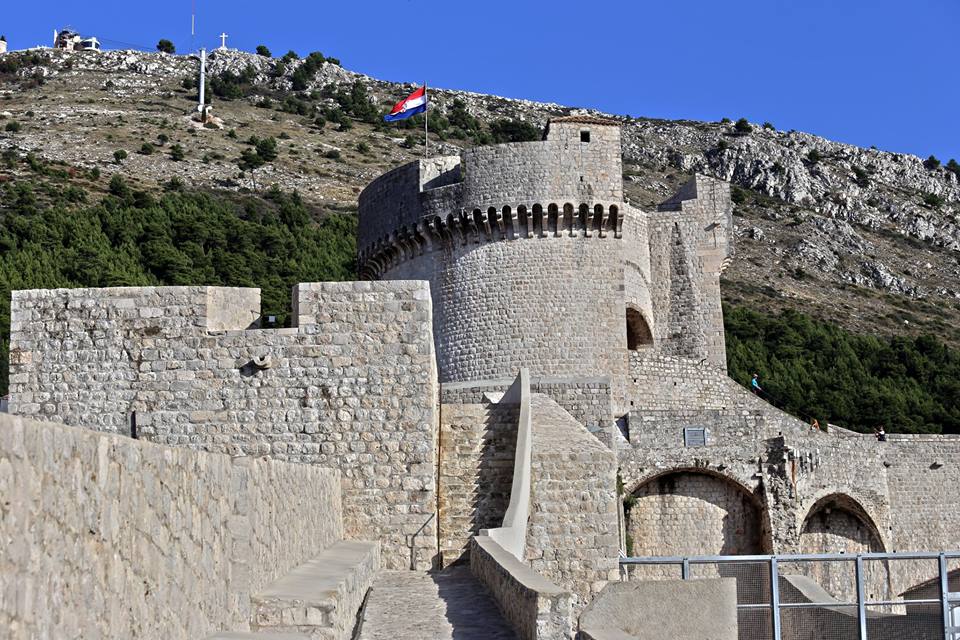
TZ Dubrovnik
Minčeta fortress is placed on the highest north-western part of the city. It is a large circular tower with a big battlement suspended by a stone support. The first quadrangular tower was constructed by Nikifor Ranjina in 1319, the architect Michelozzo Michelozzi gave it its present form and it was completed in 1464 based on the design of Juraj Dalmatinac, who was famous for numerous works in Dalmatia among which the best-known is the Šibenik cathedral, another UNESCO world heritage site.
St Luke’s Tower

TZ Dubrovnik
If you walk eastward along the city walls towards Ploče gate, you will get to St. Luke’s tower. In 1467. Paskoje Miličević designed the bulwark for the old St. Luke’s tower with openings for cannons. The tower controlled the access to the harbour.
St John's Fort
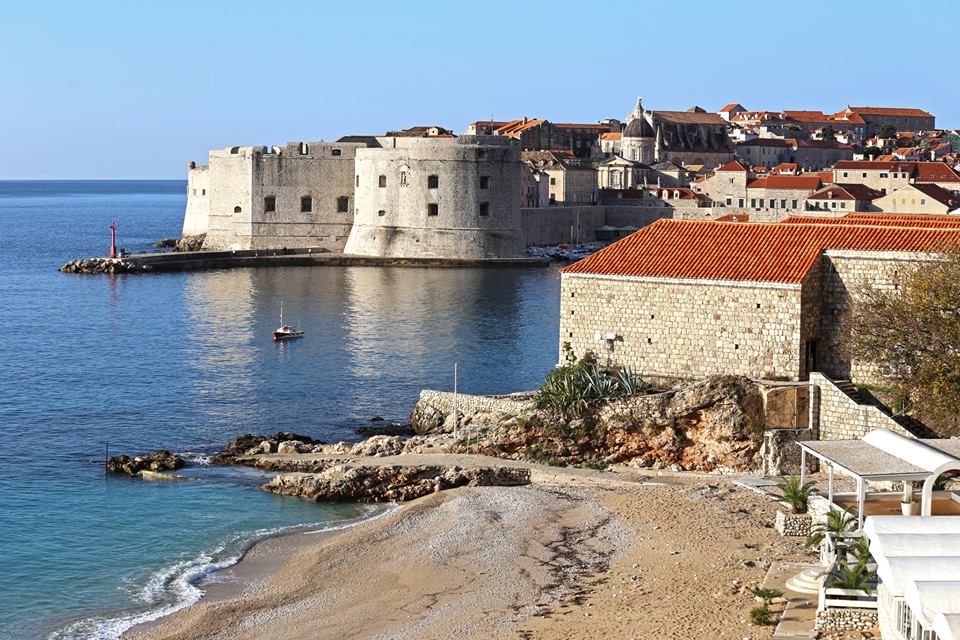
TZ Dubrovnik
This is the first quadrangular pier tower and it was constructed back in 1346 in order to protect the city harbour in the southeast, and its outlines are still visible on the western wall. The shape of the fort we know today was completed in the sixteenth century when the whole complex got bigger and outer wall was extended.
Bokar Fort
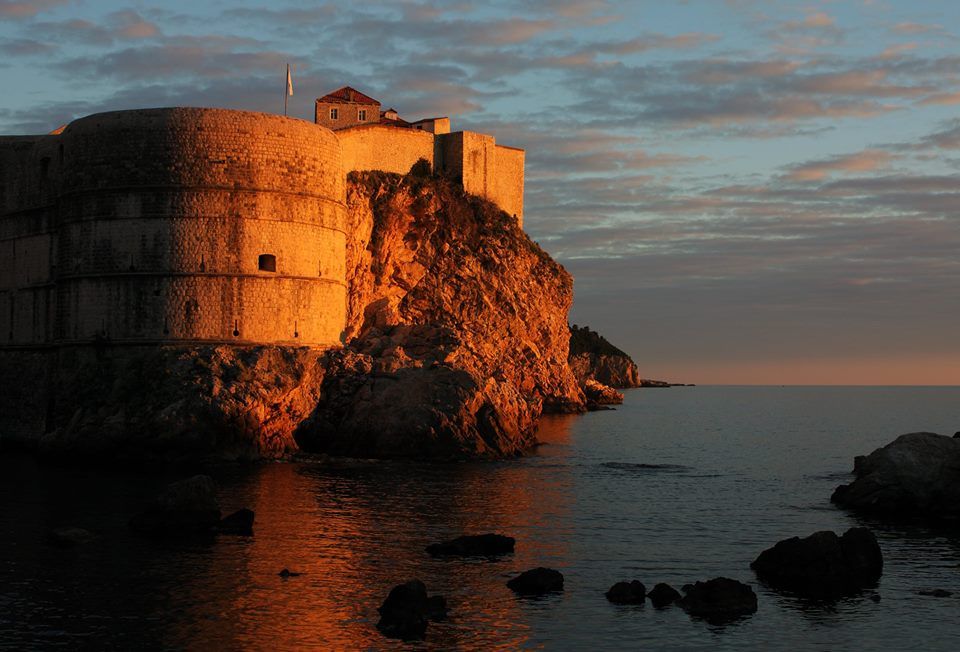
TZ Dubrovnik
This fort was important for defending the city. The gate and the bridge, as well as the moat are located at Pile. The semi-circular tower was designed by Florentine architect Michelozzi in the fifteenth century.
Lovrijenac
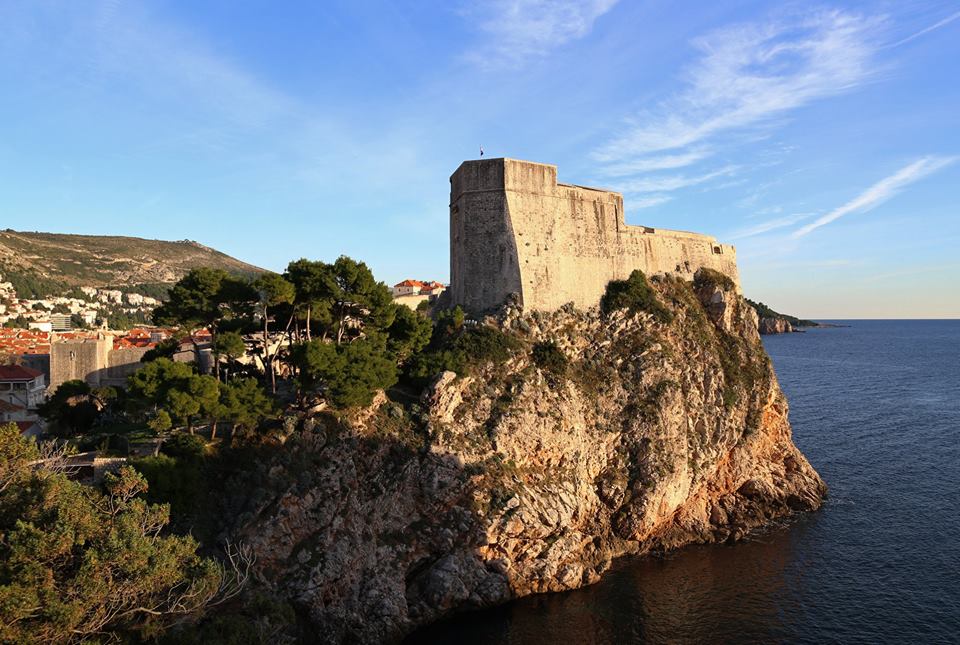
TZ Dubrovnik
This fort is set on the 37-metre-high cliffs outside of the city walls. You can reach it by walking along Pile bay and climbing the steep, stone stairs. This fort was built to protect the entrance to the city from the west. The fort's construction began in 1018 and it was completed in the sixteenth century. The walls are 4 to 12 metres thick. The entrance door boasts the Latin inscription: Non bene pro toto libertas venditur auro (Freedom is not sold for all the gold in the world). There lies the chapel of St. Lawrence and its courtyard where occasional performances and plays are held today.
Revelin Fort
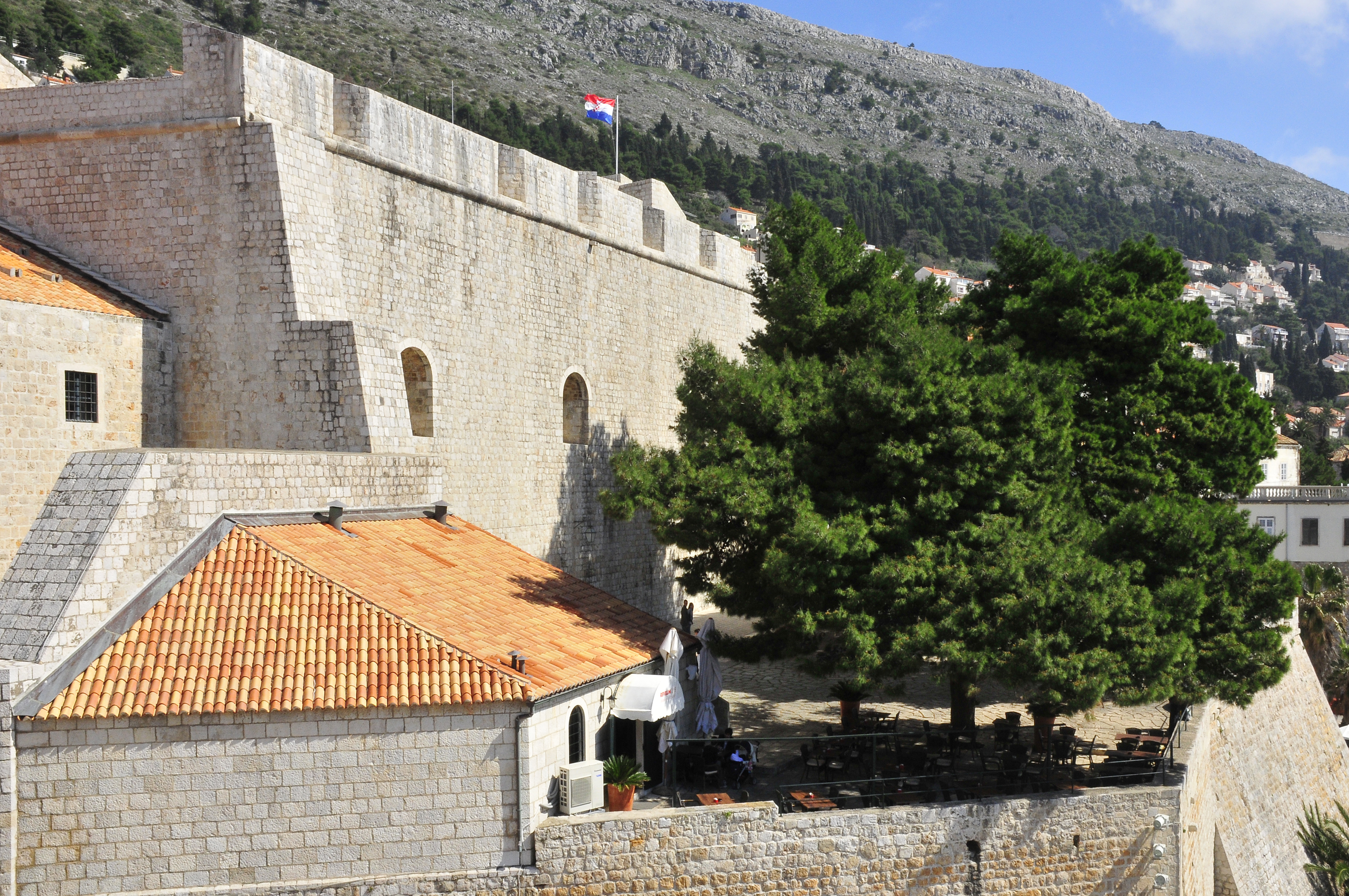
LBM1948
Revelin fort was built outside of the city walls and it was once part of the defence complex of Ploče Gate. The lower part of the fort was built in 1463, and was then rebuilt in 1538. The fort protected the eastern part of the city and the entrance to the city harbour. It has three entrances and is surrounded by a moat and the sea on three sides. Ivan Rabljanin kept the foundries for casting cannons and bells in the large interior. Now it is used as a place for Dubrovnik summer festival plays.
Pile Gate
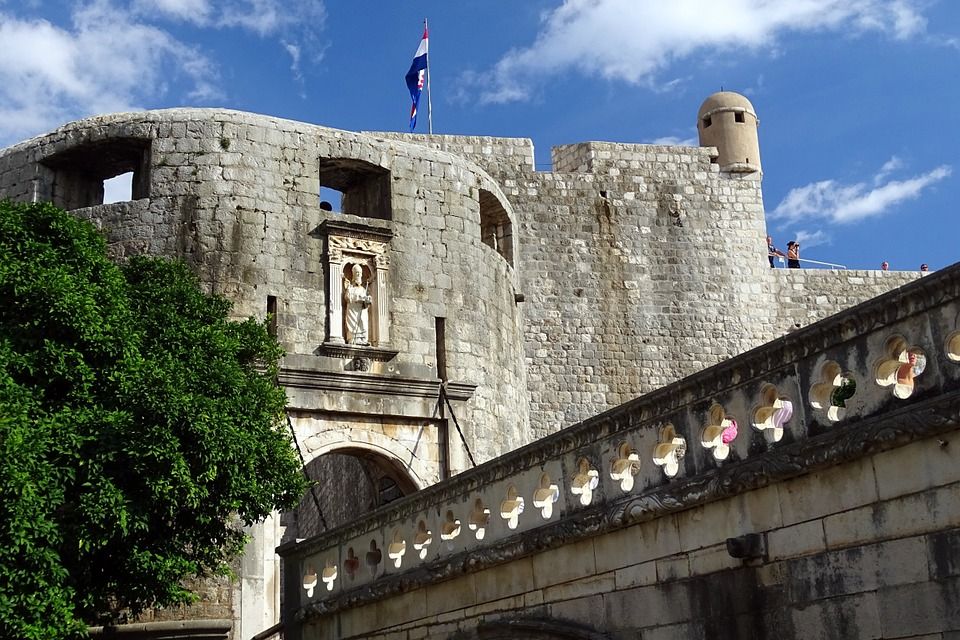
Pixabay
Just outside the city walls lies Pile – here, you first have the seaside promenade constructed outside of the walls. Here you enjoy an amazing view of the city walls and of Lovrijenac fort. If you enter the city through Pile Gate, the first thing you will see is the stone statue of St. Blaise. There is a stone bridge and a wooden bridge which lead to the outer gate, then to the renaissance semi-circular tower. When you pass through the inner gate, you enter Dubrovnik's main street – Placa or Stradun.
Stradun
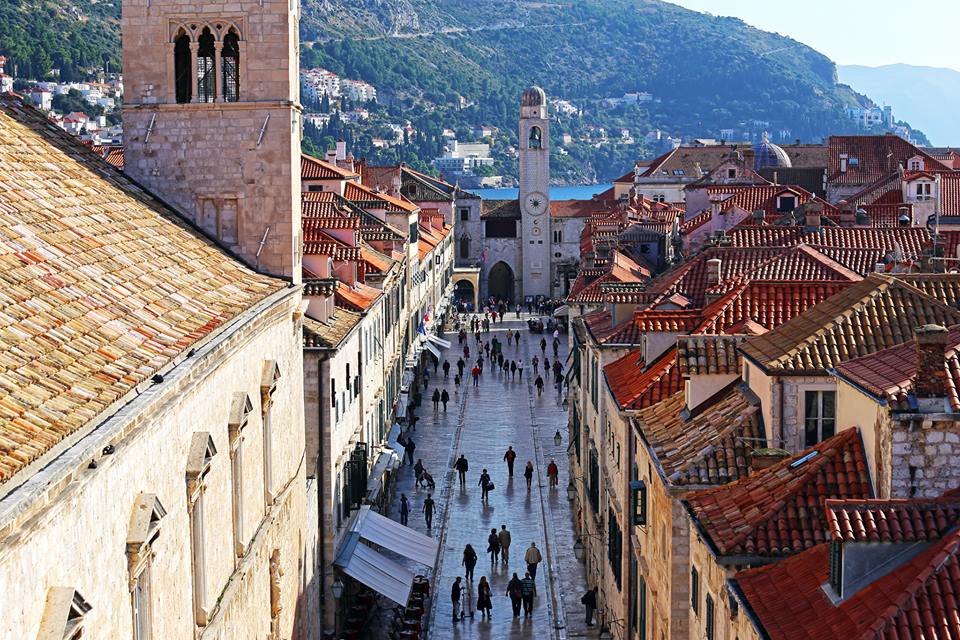
TZ Dubrovnik
Placa or Stradun is the main street in Dubrovnik. Stradun is 298 metres long and the statute of the city from 1272 determined the final plan for the city and its main street. The houses on Stradun are built in baroque-style architecture with shops on the street level. Stradun has its modern-day shape after the earthquake in 1667, when a large number of gothic and renaissance palaces were sadly destroyed. Even today, Stradun is the main centre for all the events in the town.
Large Onofrio's Fountain
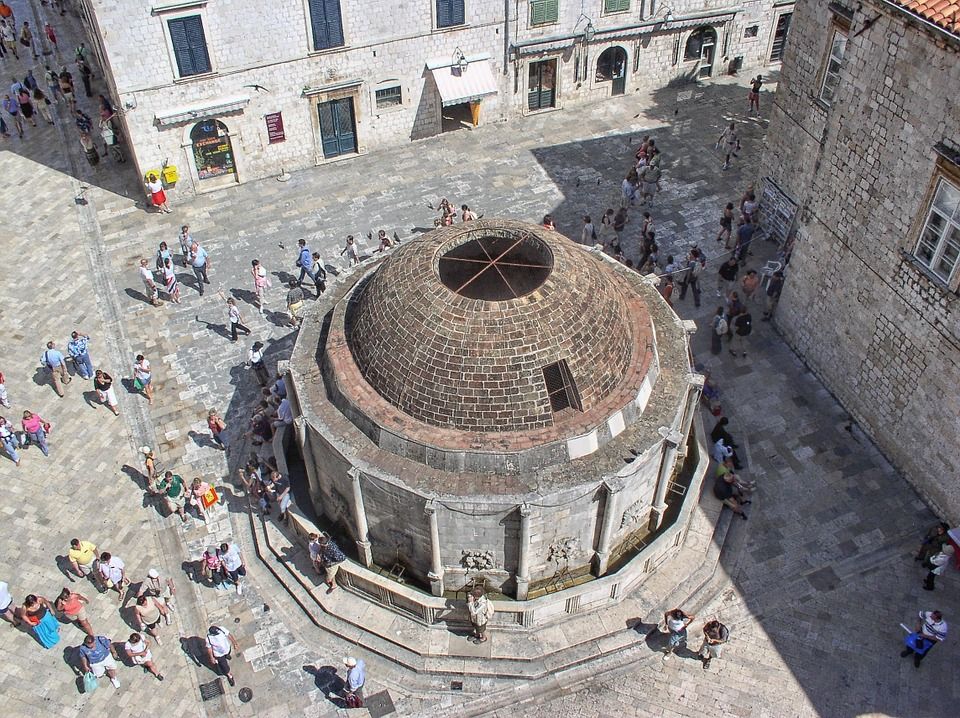
Pixabay
When on Stradun, one of the main sights is the large Onofrio's fountain. This is a large polygonal fountain with sixteen stone carved maskerons which provide running water. The fountain was designed by Onofrio Della Cava who also designed the small fountain at the other end of Stradun – the fountains were built for public use in 1438 when fresh water was brought to the city from Rijeka Dubrovačka. The fountain is now connected to the new waterworks system. The cupola was damaged during the 1667 earthquake and later reconstructions sadly failed to restore it.
Small Onofrio's Fountain
Sailko
Small Onofrio's fountain was designed in 1446 and the stone mason work was handled by Pietro di Martino di Milan. Located in a niche to the city guard building, it is part of the original setting for the carnival play “The tale of Stanac” by the famous Dubrovnik playwriter Marin Držić.
City Guard Building
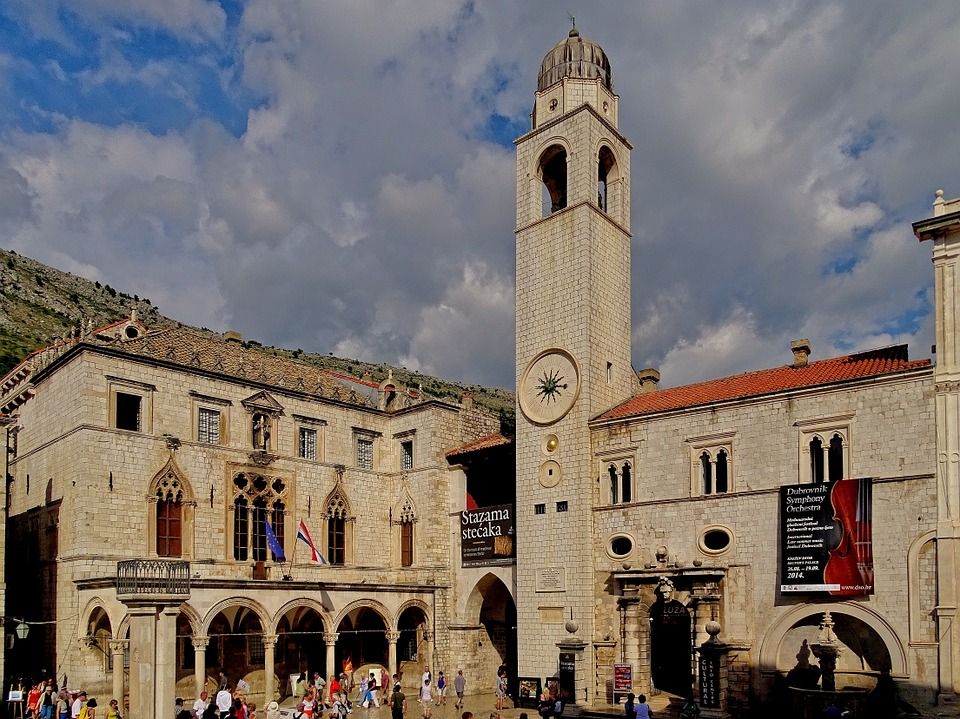
Pixabay
The City Guard building was the admiral’s residence during the fifteeth century. It was restored in the twentieth century and it is now the entrance to the cinema.
Rector's Palace
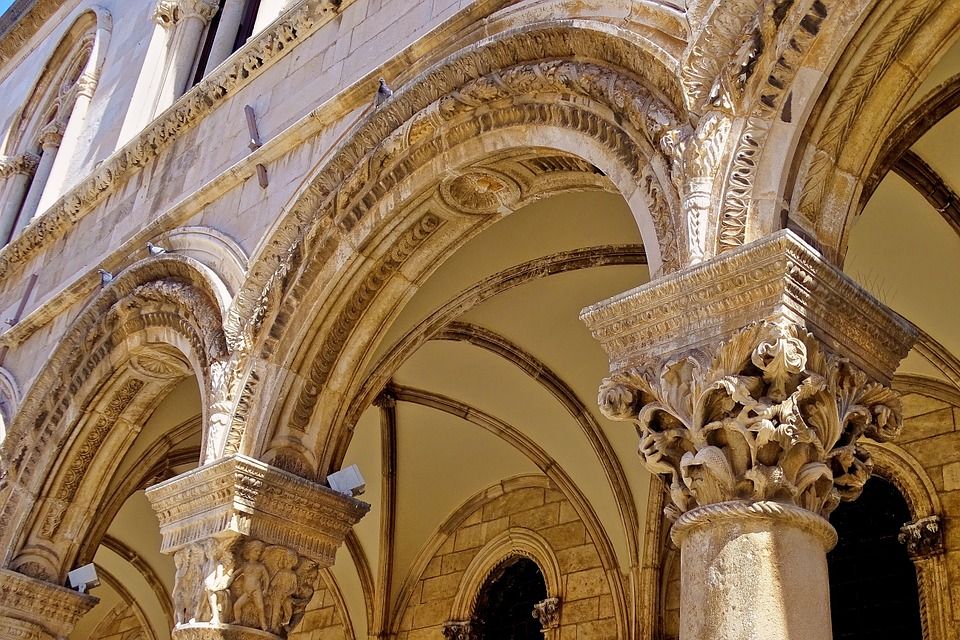
Pixabay
The Rector's Palace is one of the most important pieces of heritage on the Croatian coast – this was the administrative centre of the Dubrovnik Republic – it is built in a gothic style with reconstructions in renaissance and baroque style. It was damaged in the fifteenth century by gunpowder explosions and restored by Onofrio Della Cava in late gothic style in 1435. The second gunpowder explosion in 1463 destroyed the western facade
and the two famous architects Juraj Dalmatinac and Michelozzo worked on reconstruction. After the earthquake, the atrium was partially reconstructed with a baroque staircase. During his one month mandate, the rector lived in the palace which was the place of both the minor and major council hall, the rector’s residence, the city's courtroom, the administration office(s), the prison, and even for arsenal and gunpowder storage.
Above the entrance door lies the inscription: Obliti privatoru publica curate (Forget your private business, concern yourselves with public affairs).
In the atrium sits the bust of a rich sea captain and benefactor, Miho Pracat, this work was done by P. Giacommetti in 1628. The Miho Pracat statue is the only statue in the city for the common people – The former Dubrovnik Senate decided to do this 1638. The bust is placed between two columns in the eastern wing of the Rector's palace atrium. He was not only a rich seaman who left his wealth to the Republic, but a ship owner and a very skilled merchant. This was an enormous honour as the Dubrovnik Republic never built statues for its contemporaries, and found it inappropriate to have statues in public places. Today, the Rector's Palace is the home of the Dubrovnik museum.
Ploče Gate
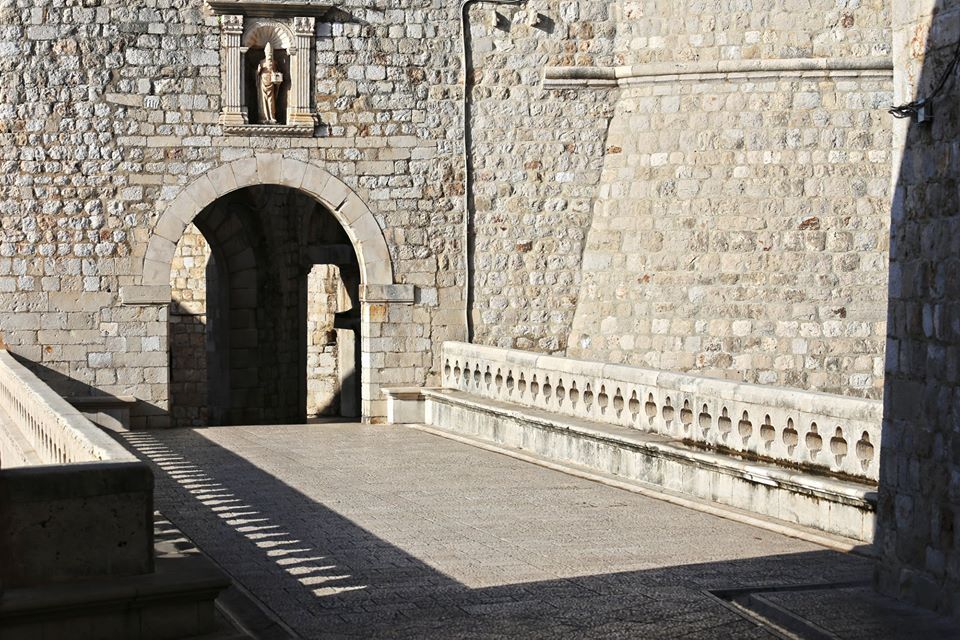
TZ Dubrovnik
Ploče gate is the eastern entrance to the city. When you pass through this gate, you will see two small churches. This entrance is fortified and had inner and outer gates with stone bridges from the fifteenth century onwards, and there lies a statue of St. Blaise, the city's patron saint.
Luža and the City Bell Tower
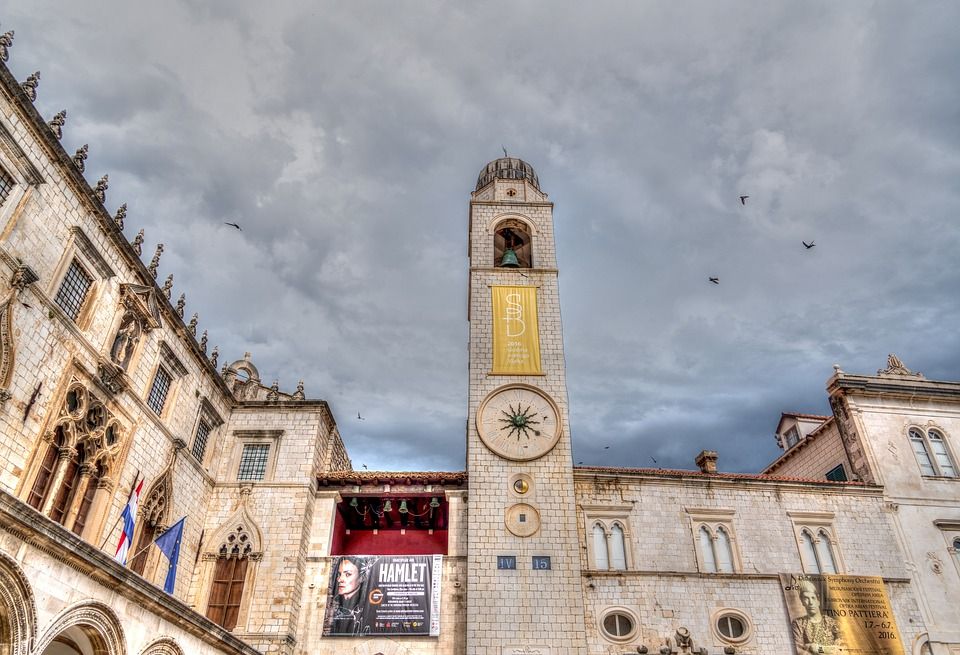
Pixabay
After passing through Ploče gate, you will end up in front of Luža and the City Bell Tower. The bell tower, built in 1444, once had figures called Zelenci who struck each hour with their hammer. The bell tower was damaged in the earthquake and it was rebuilt in 1929, while the Zelenci figures were replaced with replicas.
Sponza Palace
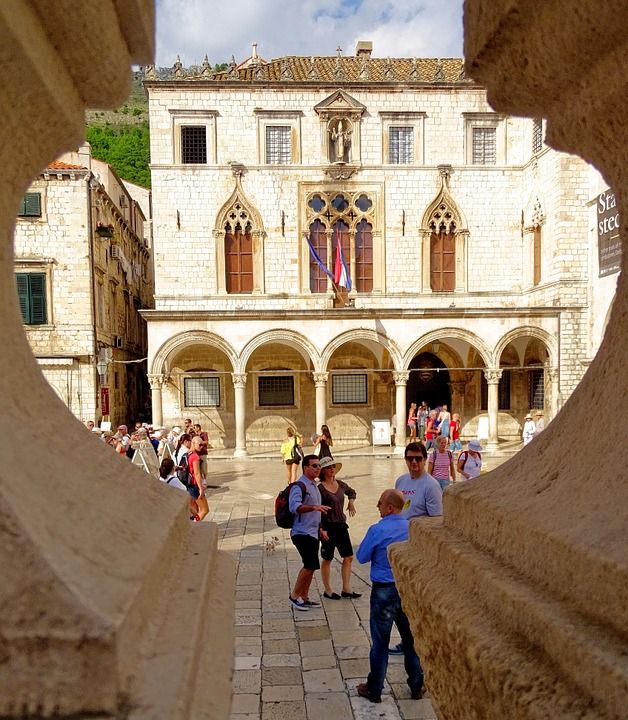
Pixabay
Right next to the bell tower lies Sponza Palace. This building is the best example of Dubrovnik's highly specific gothic-renaissance style. It was constructed in the sixteenth century based on the design of Paskoje Miličević. It was built in a rectangular shape and has a portico and an atrium. On the main wall lies the inscription: Fallere nostravetant, et fall pondere, meqve pondero cvm merces ponderat ipse deus (We are forbidden to cheat or falsify measures and when I weigh goods, God himself is weighing them with me).
This was the liveliest commercial centre of the city and in the seventeenth century, it became the meeting point for members of the Academy who discussed literature, the arts, and science. Today, it’s the home of the Dubrovnik archives.
Church of St Blaise
TZ Dubrovnik
The Church of St. Blaise is one of the most important buildings in Dubrovnik. St. Blaise is the patron saint of Dubrovnik who has been celebrated every year on February the 3rd, and this festivity is part of the city's UNESCO intangible heritage. The church got its present form is from 1715 and is a shining example of Venetian Baroque. It was built by Marino Gropelli upon the request of the Dubrovnik Senate. It was damaged in the earthquake, and then again in the fire in 1706.
In that fire, everything was destroyed except the silver statue of St. Blaise. This statue was then kept in the small church of St Nicholas on Prijeko before being brought back to its original place in 1715. This statue is one of the most valuable sculptures in Dubrovnik and the saint holds the city model, from which one can see how Dubrovnik once looked long ago. St Blaise has been being celebrated in Dubrovnik from the tenth century onwards, when he saved the people of Dubrovnik from a surprise Venetian attack with a solemn warning.
Orlando’s Column
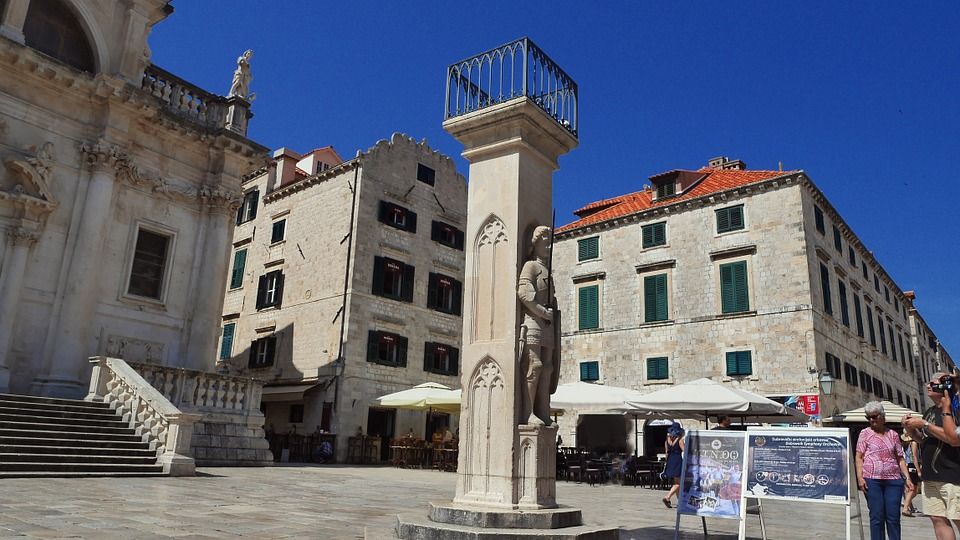
Pixabay
In front of the Church of St. Blaise lies the most important symbol of statehood and freedom for Dubrovnik – Orlando’s column. Orlando’s column was constructed by Bonino di Jakopo and Antun Raguso. Erected in 1419, Orlando’s column, with the statue of a medieval knight, stands in the square and presents Roland, the eighth-century knight from the Chanson de Roland. The reason this statue is in Dubrovnik is probably because it was brought by King Sigismund, a Hungarian and Bohemian king who was the patron of Dubrovnik Republic.
Additionally, there is a legend that says Roland saved Dubrovnik from Saracens and defeated them near the island of Lokrum. Senate decisions were announced in front of it. This statue was also a punishment spot and a pillar of shame. The white flag of the Dubrovnik Republic with the image of St. Blaise remained on the column until the abolition of the Republic in 1808. Now the Croatian flag flies there, and the flag is changed only during the Festivity of St. Blaise and during the Dubrovnik summer festival. This year, Dubrovnik is marking the 600th anniversary of the construction of Orlando’s column, and therefore 2019 is considered to be the year of Orlando.
Buža Gate
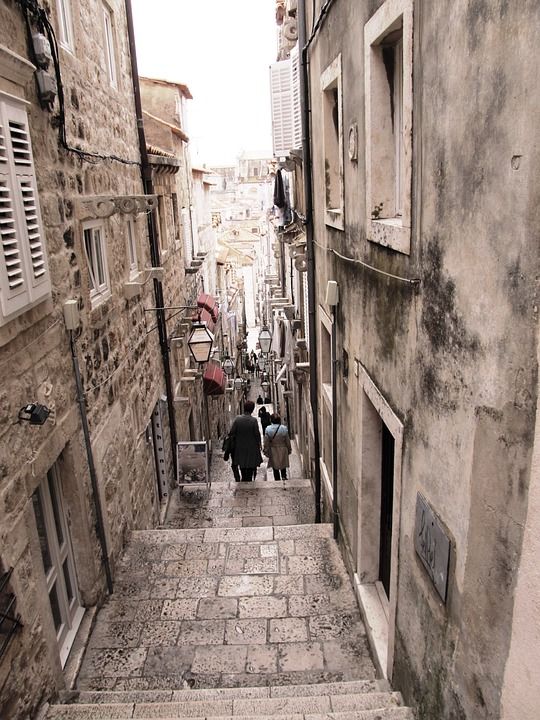
From Prijeko to Ruđer Bošković street (the place where the famed eighteenth century Croatian scientist, physicist, astronomer, and poet was born) stands the gate that was built back in 1907.
Gundulić Square
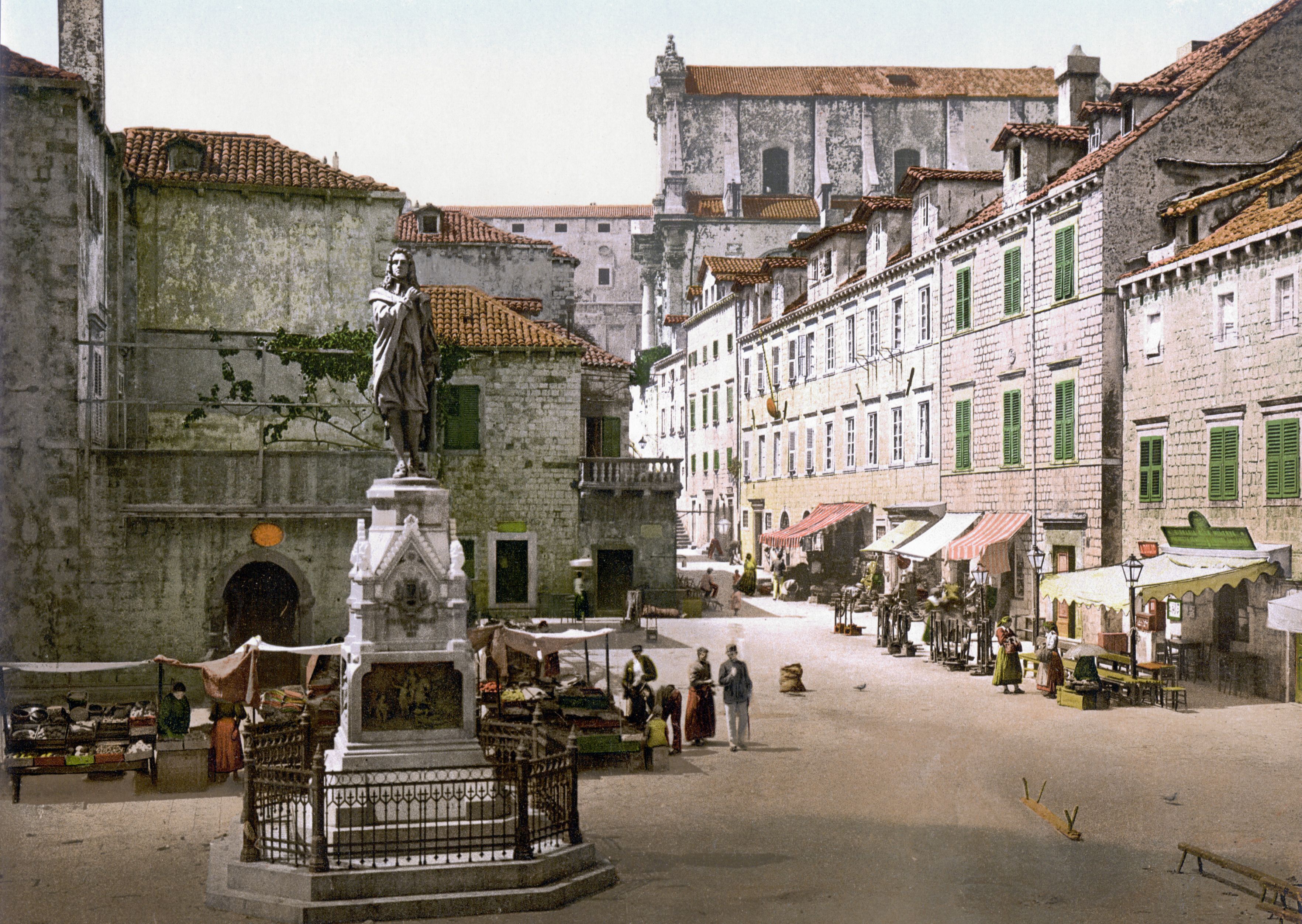
Behind the cathedral lies Gundulić square which is home to the statue of Ivan Gundulić, one of Dubrovnik's best eighteenth-century poets – this statue is the work of Ivan Rendić, and on the base of the statue there are bronze relives with scenes from Gundulić's epic poem - Osman. Ivan Gundulić was born in 1589 to an old and respectable aristocrat family. He later became famous on his own merit for his valuable works. This is the place where the green market in the morning sets up. What is interesting is that in front of the statue there are hundreds of pigeons waiting for their meal every single day – the city funds ten kilos of corn to feed the pigeons.
Jesuit Church
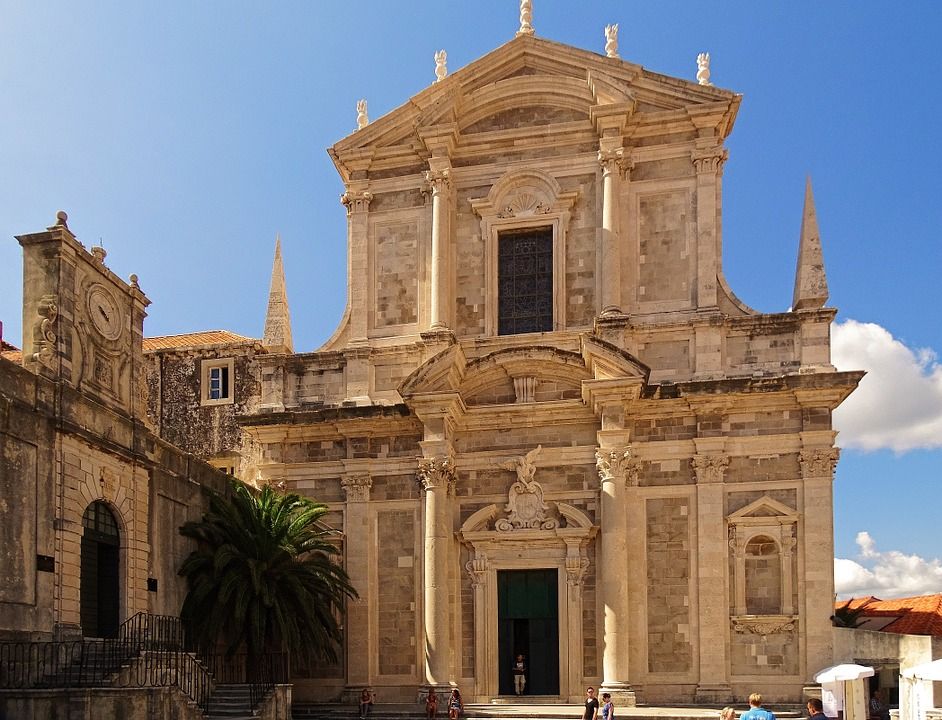
Pixabay
From there, if you go up the baroque stairs you will reach the Church of St. Ignatius or Jesuit church which is the home of Dubrovnik's most beautiful baroque complex. This church is the work of Ignazio Pozzo and right next to it is Collegium Ragusinum, the famous Jesuit school. Collegium Ragusinum was initially founded because the people of Dubrovnik were dissatisfied with their Italian teachers. The first steps for this to happen were initiated in the sixteenth century but it wasn't until the end of seventeenth and the beginning of the eighteenth century that works started. Collegium Ragusinum hosts a massive 10,000 volumes with incunabula and manuscripts by Dubrovnik's numerous writers.
City Harbour
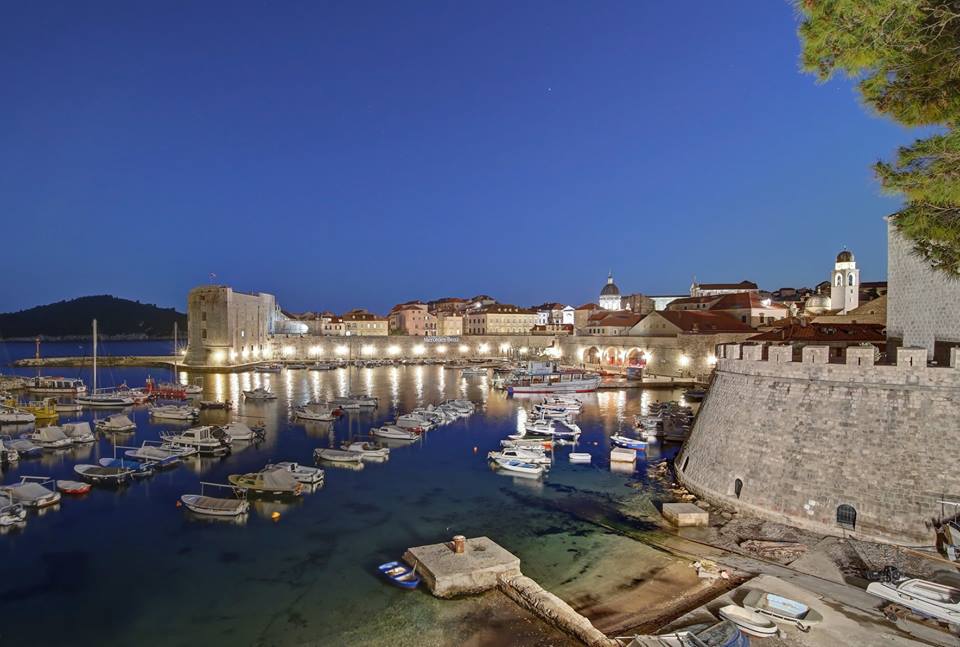
TZ Dubrovnik
The city harbour got its look back in the fifteenth century - the most recognisable part of it is the three arches of the large arsenal. East from the large arsenal there is the fish market gate and then three arches of small
arsenals where smaller ships were repaired. At the location of the large arsenal today lie the city cafe and the theatre.
Lazarettos
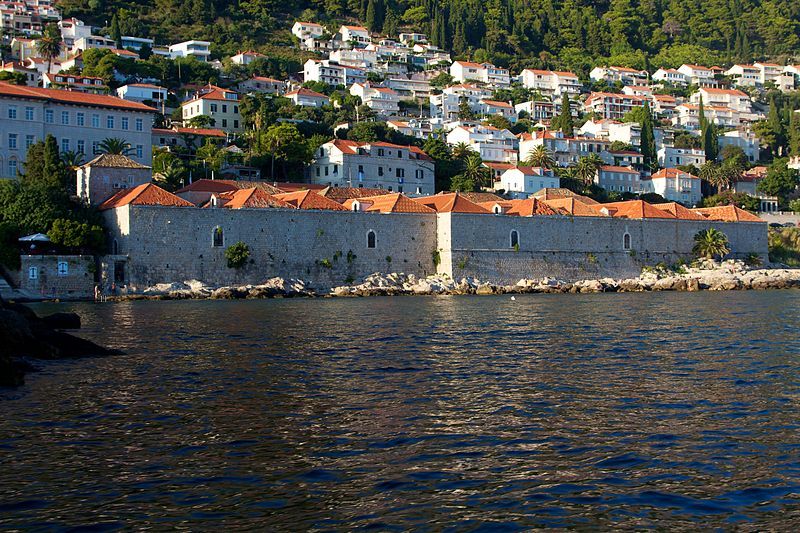
Ramon
Lazarettos (Lazaretti)
This was the place for the first quarantine built in the fourteenth century in order to isolate travellers and goods from eastern countries. There were eight buildings and five courtyards which were renovated in the sixteenth century. This complex included large warehouses and lodging for the extended stay of merchants and travellers. In the seventeenth century, this was the largest merchant transit centre on the Adriatic and one of
the best-organised quarantines in the entire Mediterranean.
With this sheer amount of invaluable heritage that is still standing today after all these centuries, Dubrovnik definitely deserves to be considered one of the greatest towns in the world, and its popularity in terms of tourist visits and global interest is very much understandable.


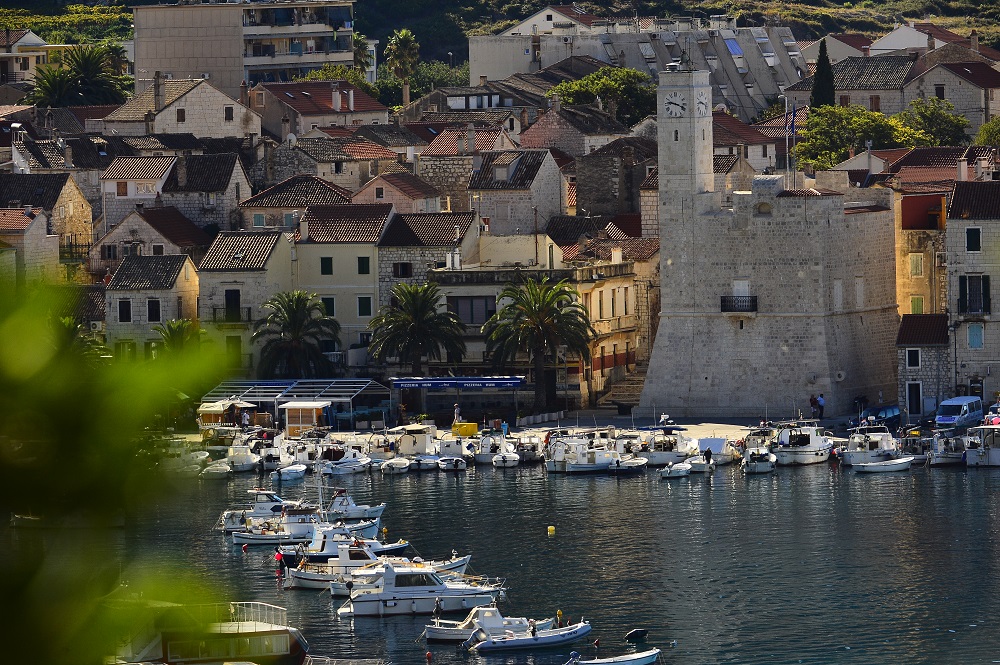
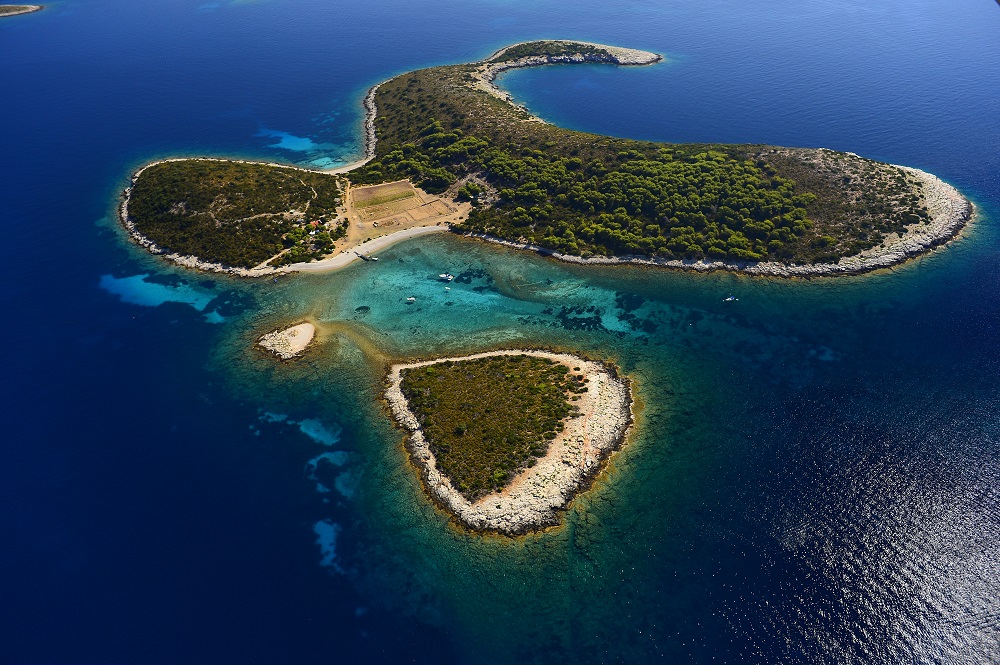
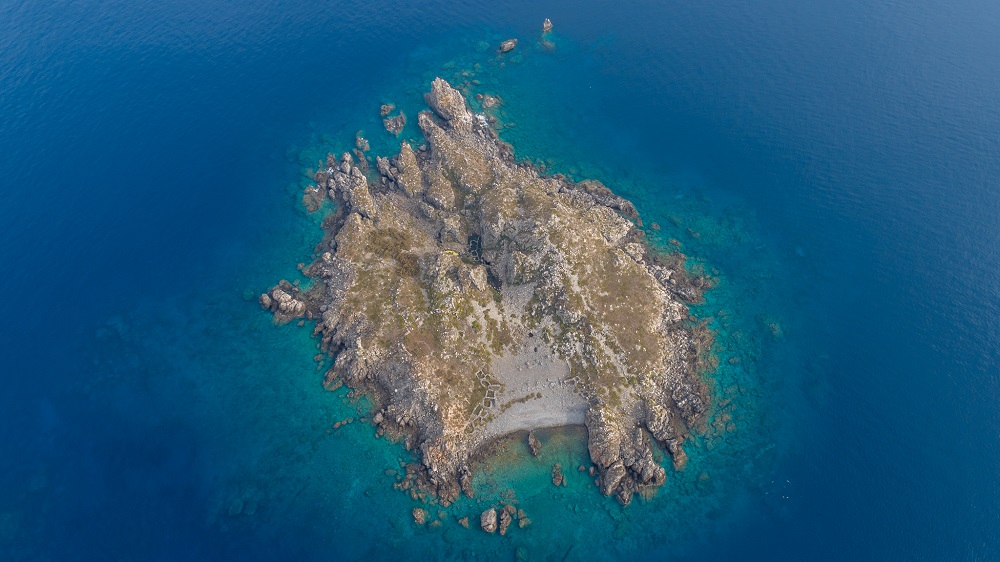
.JPG)
